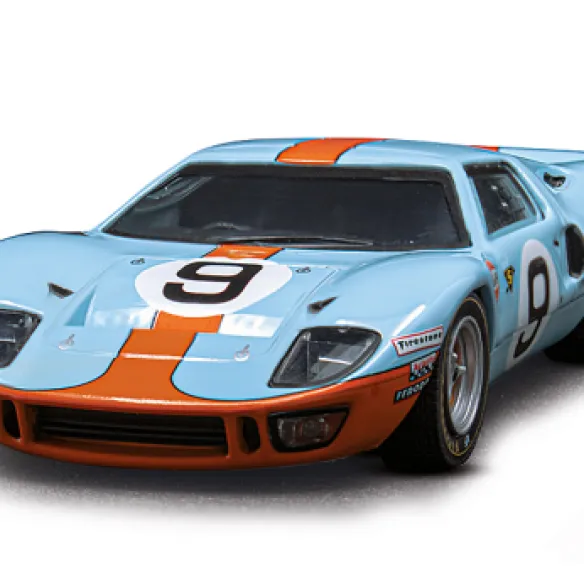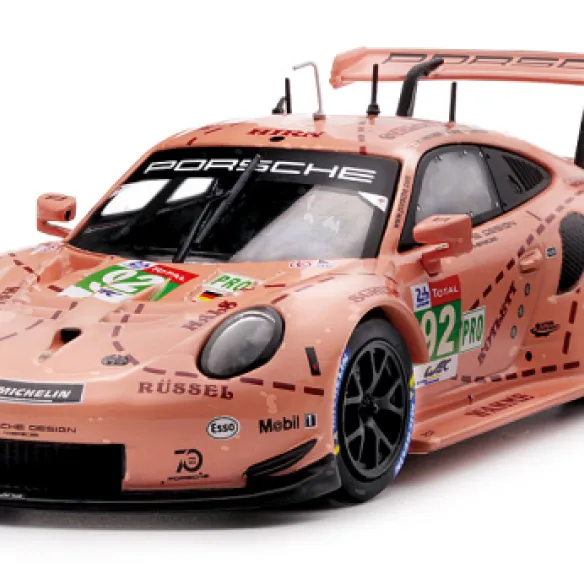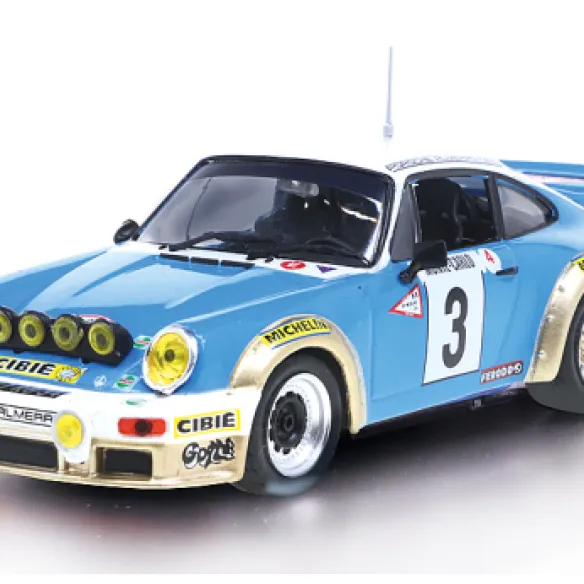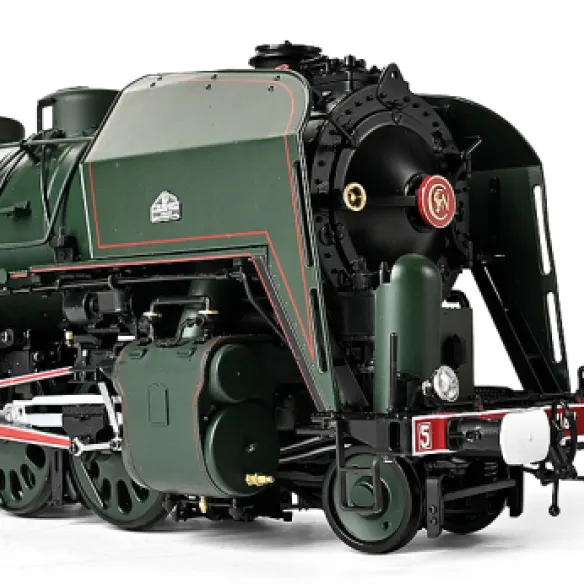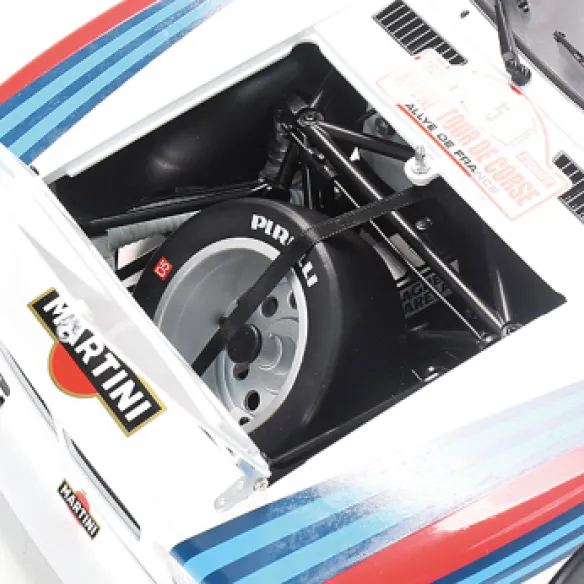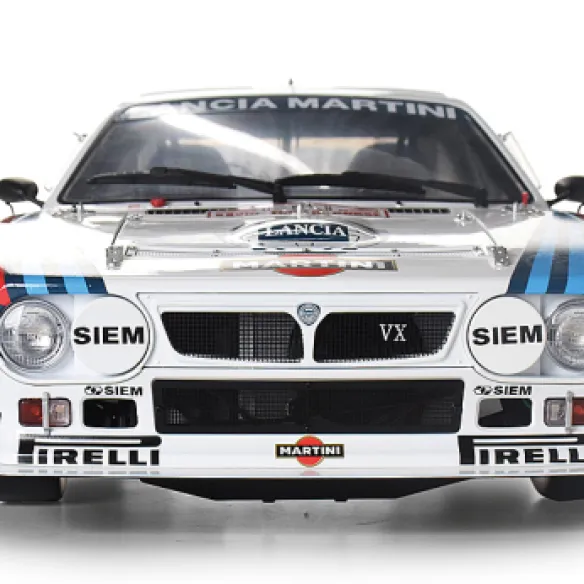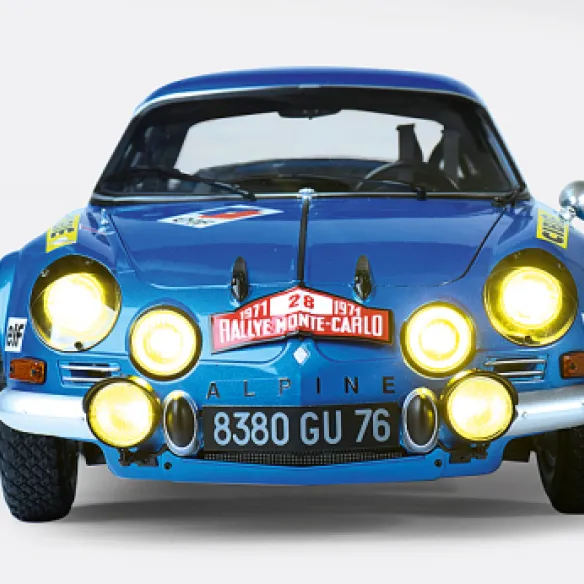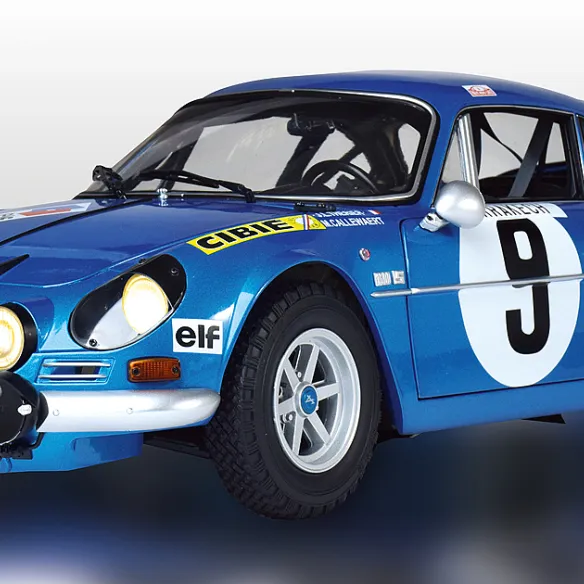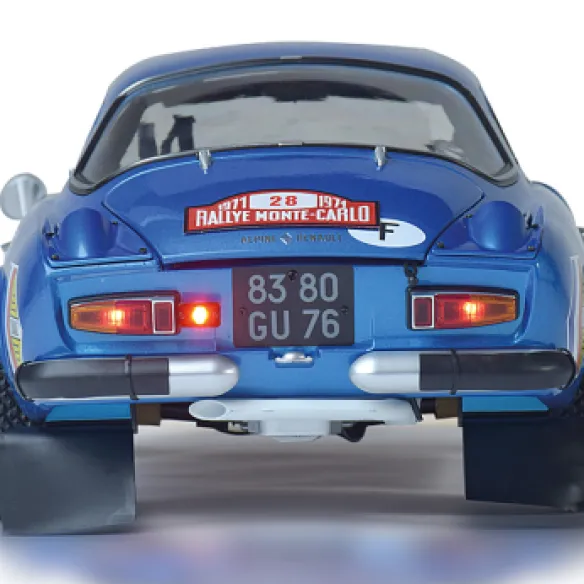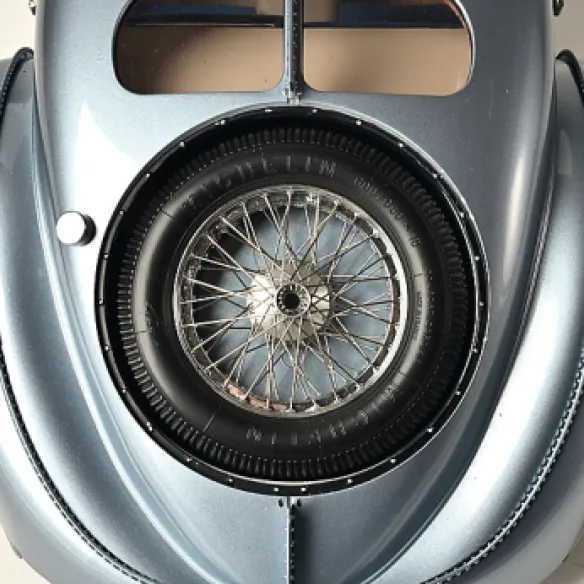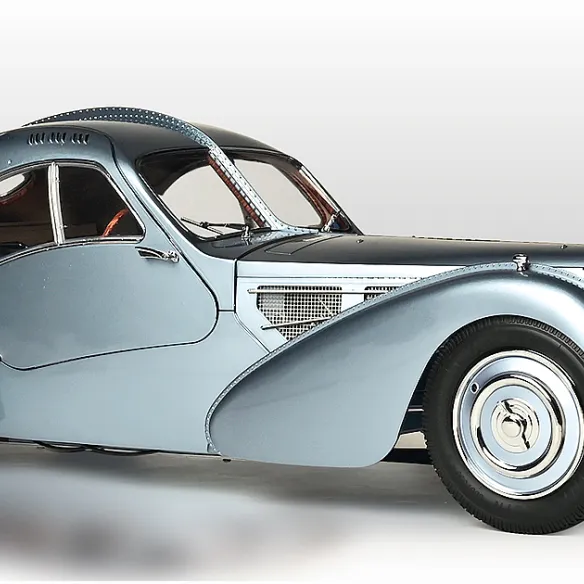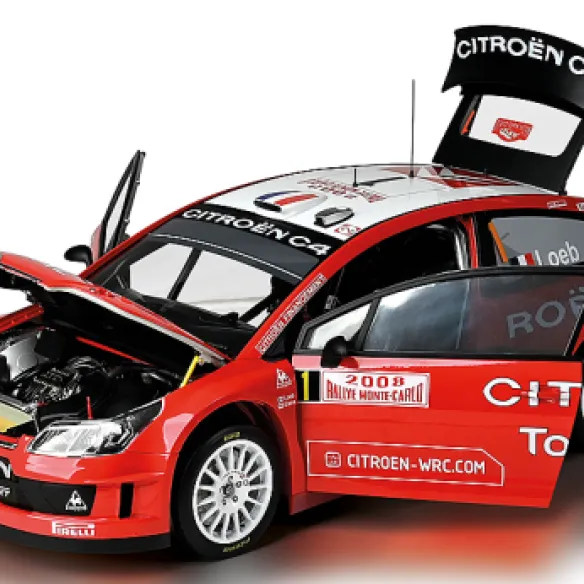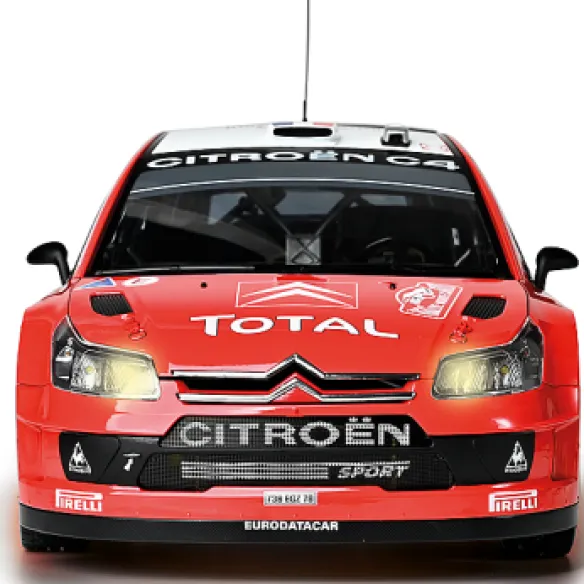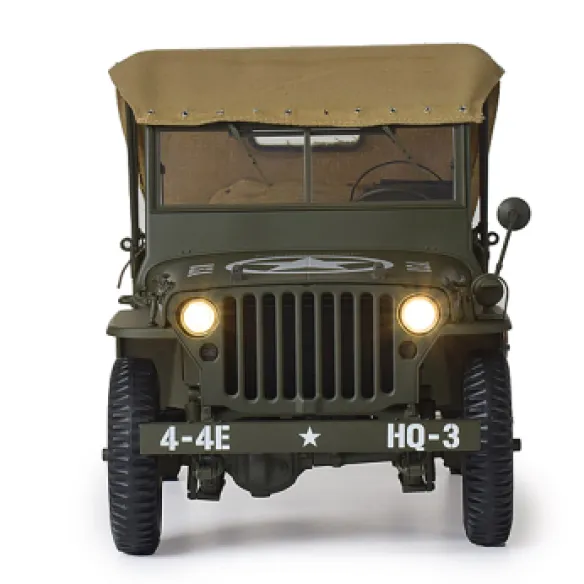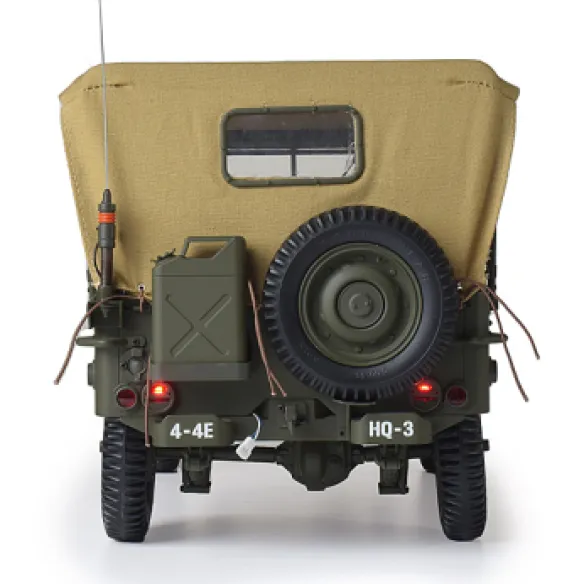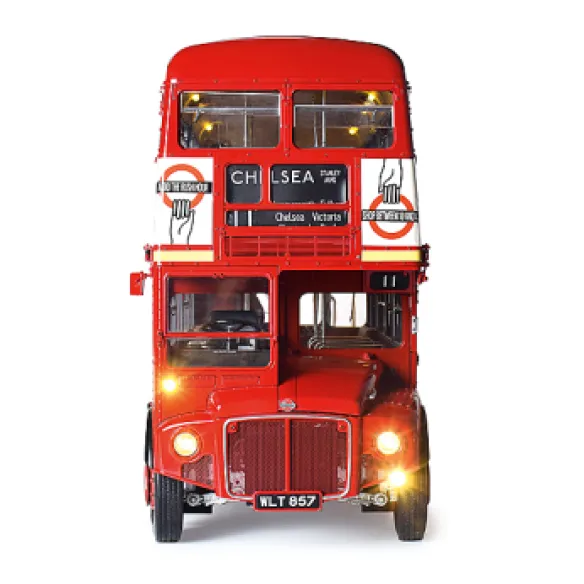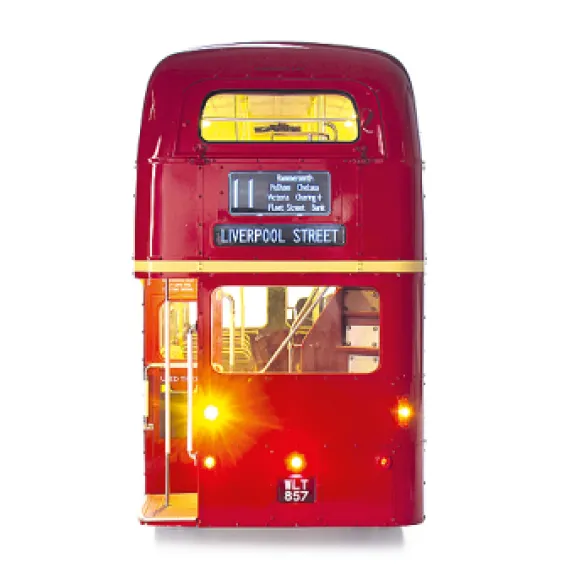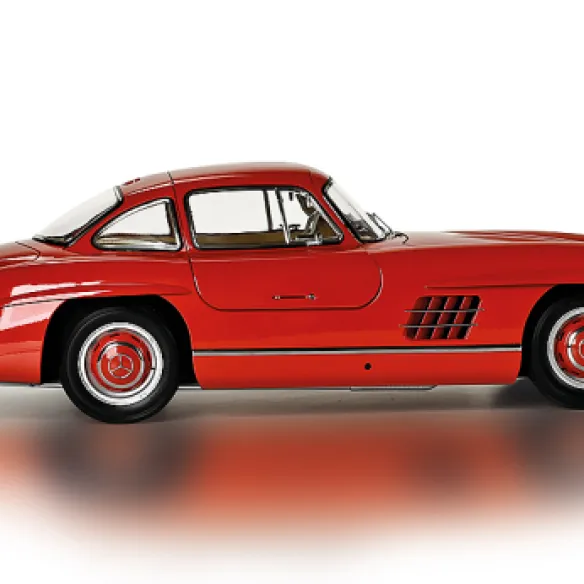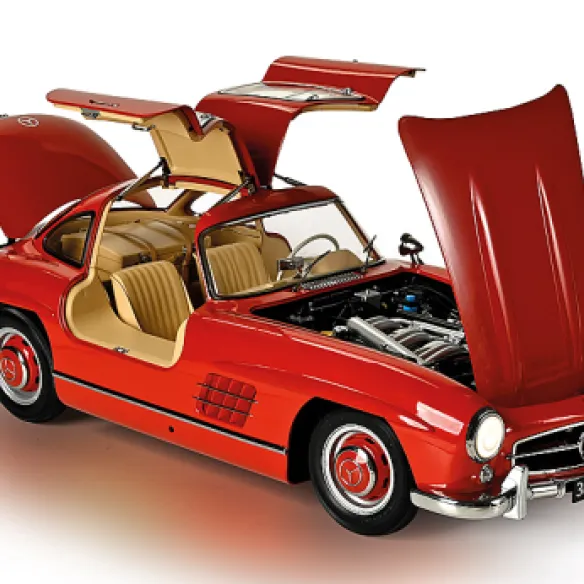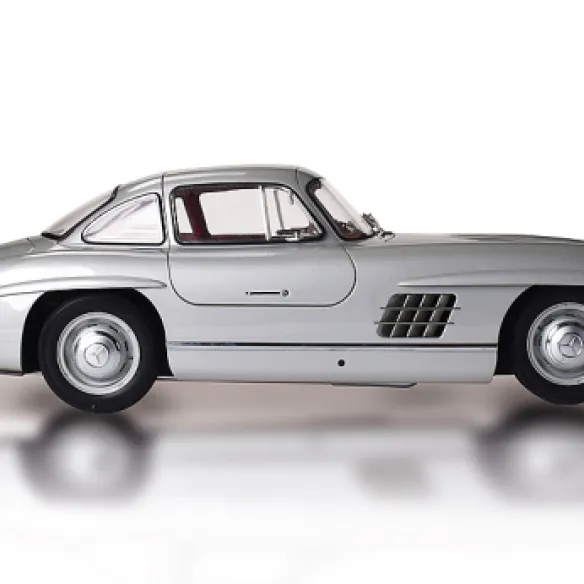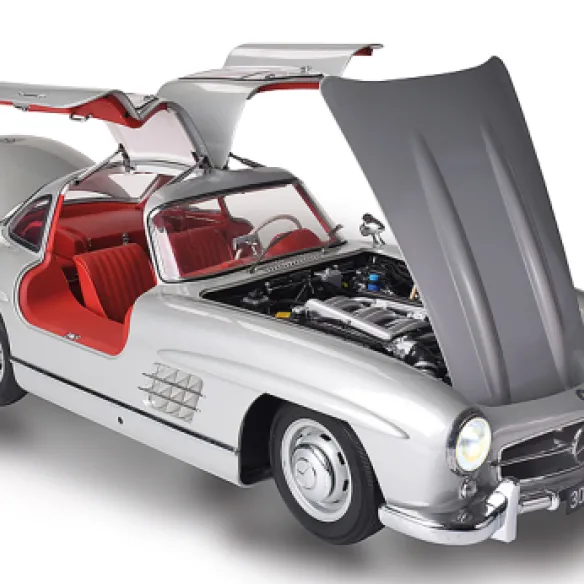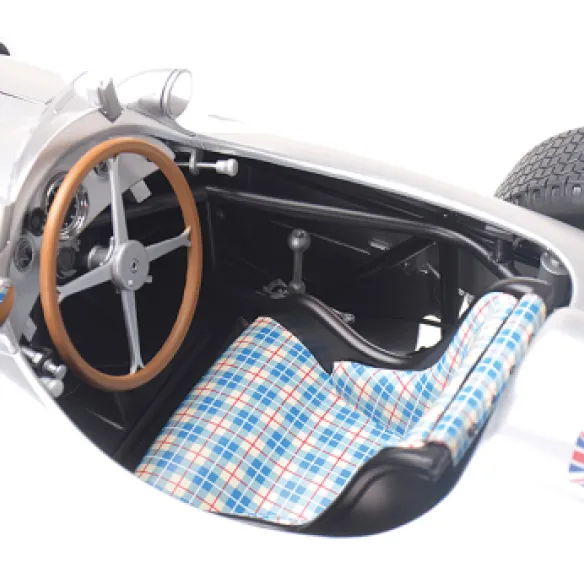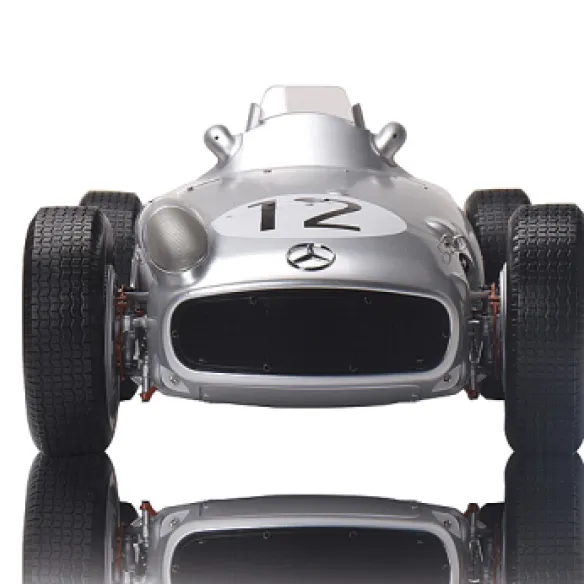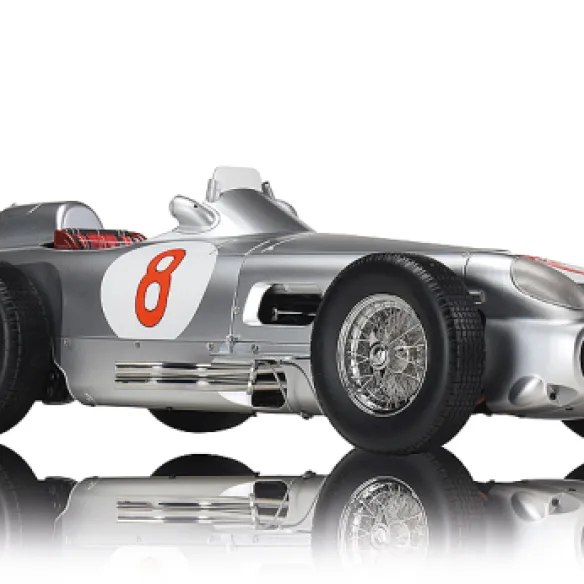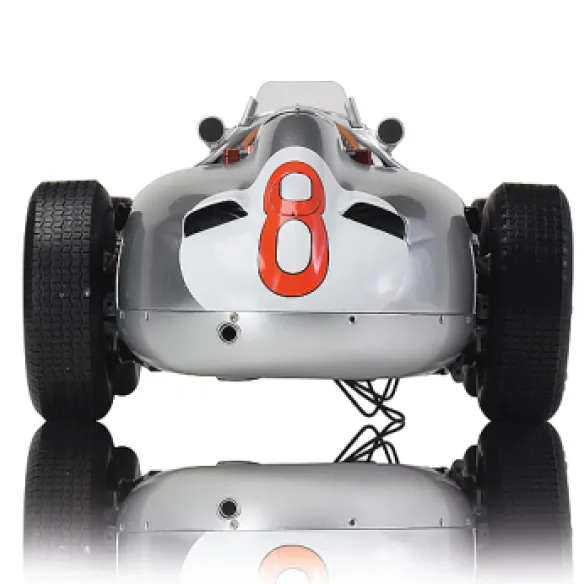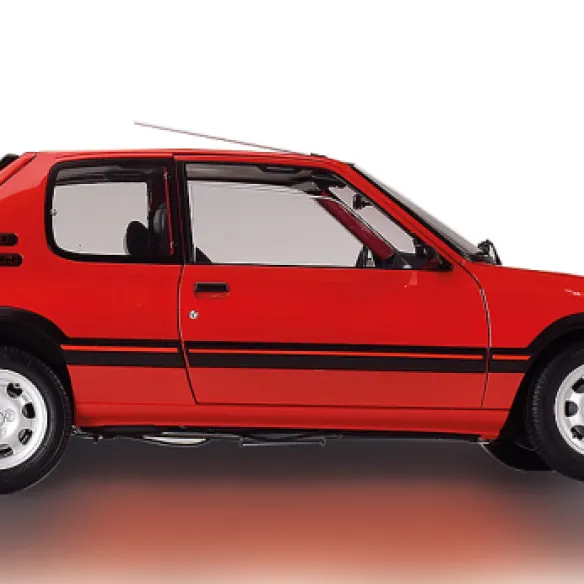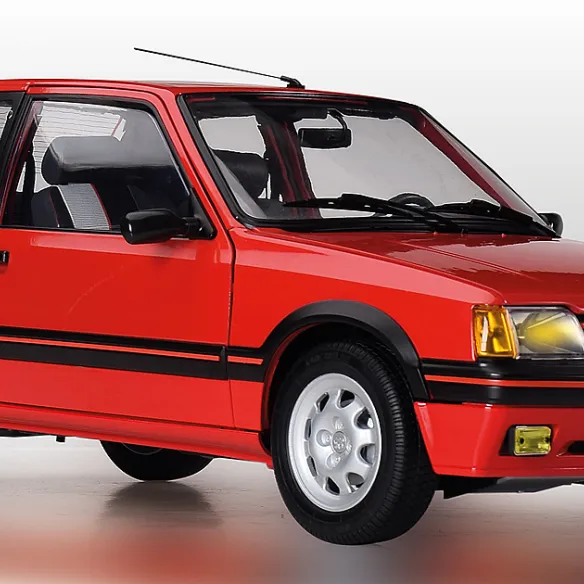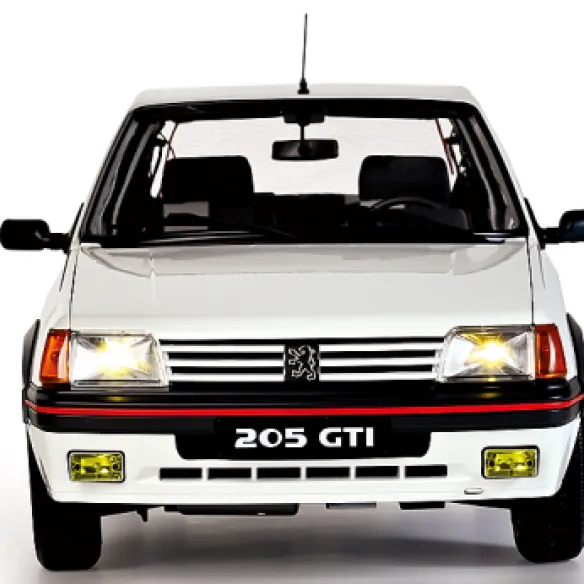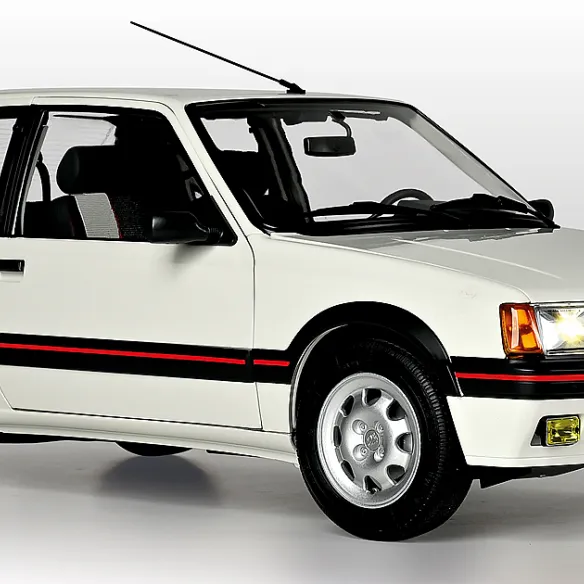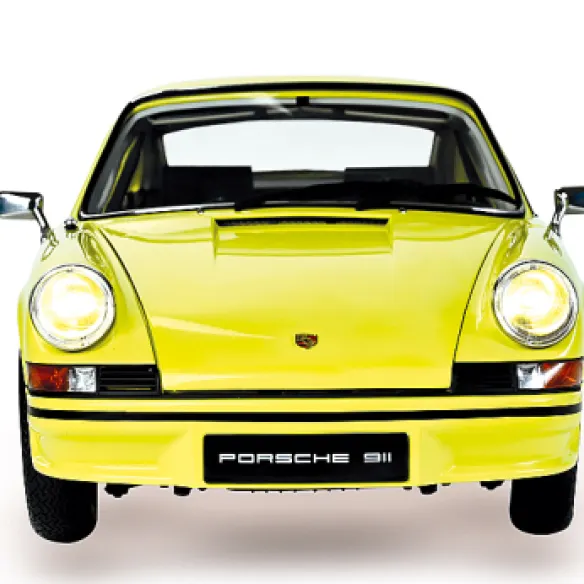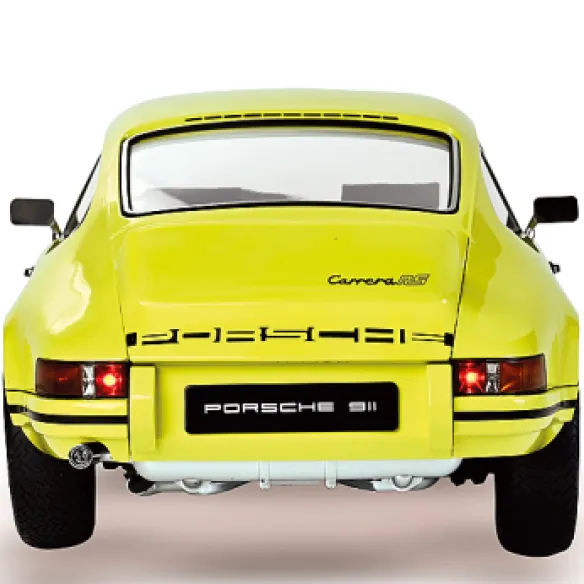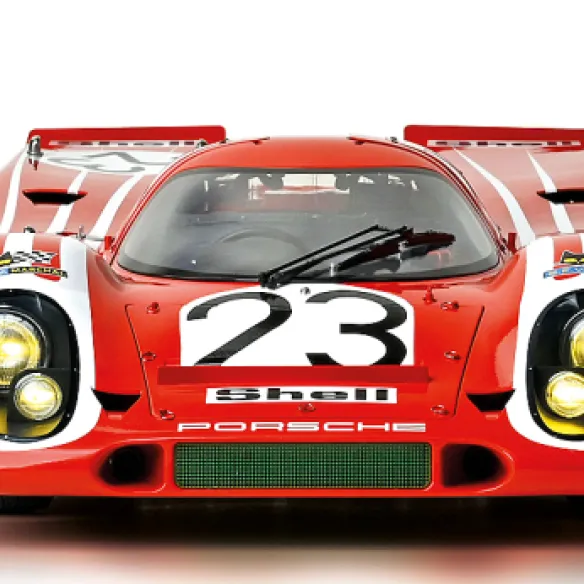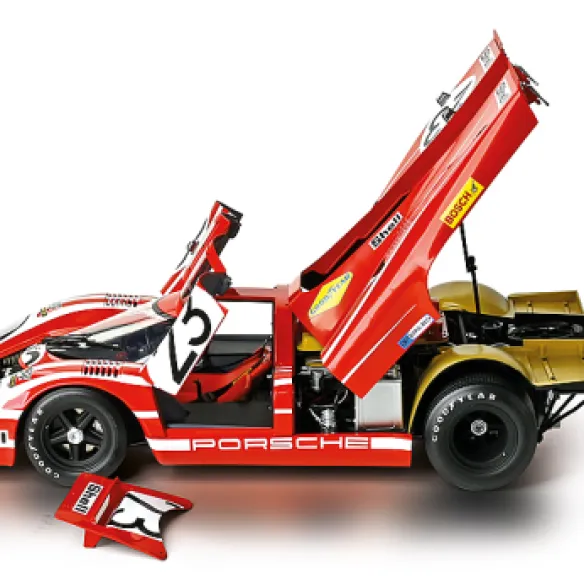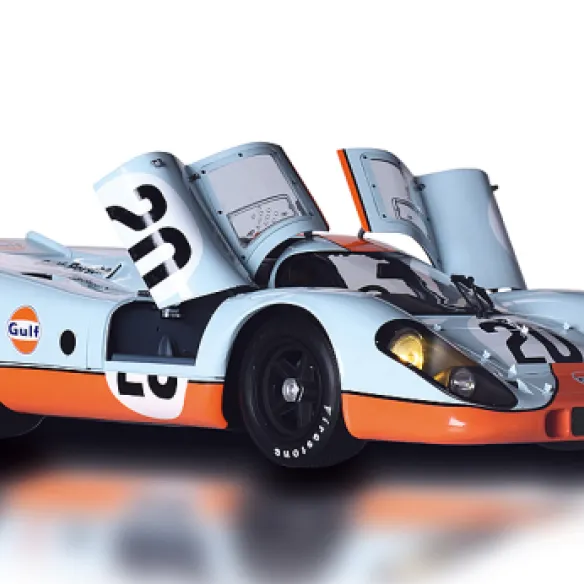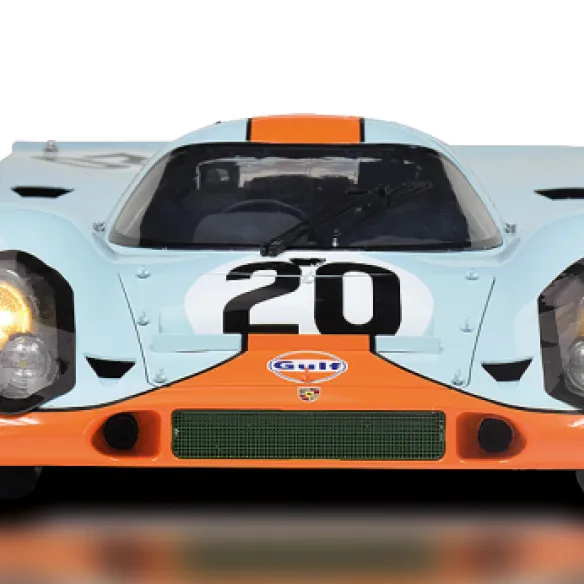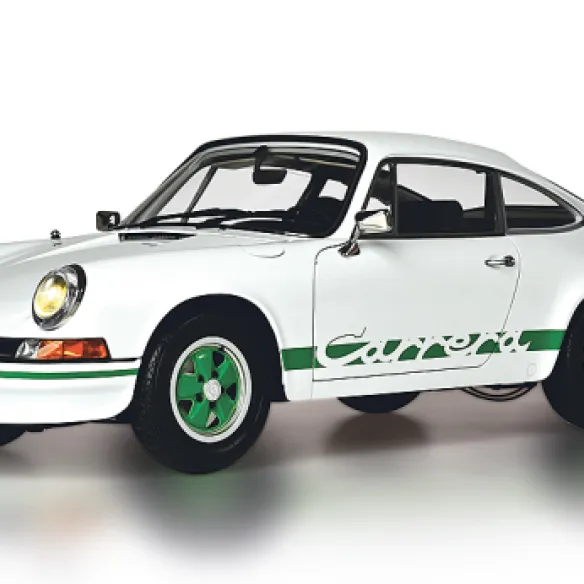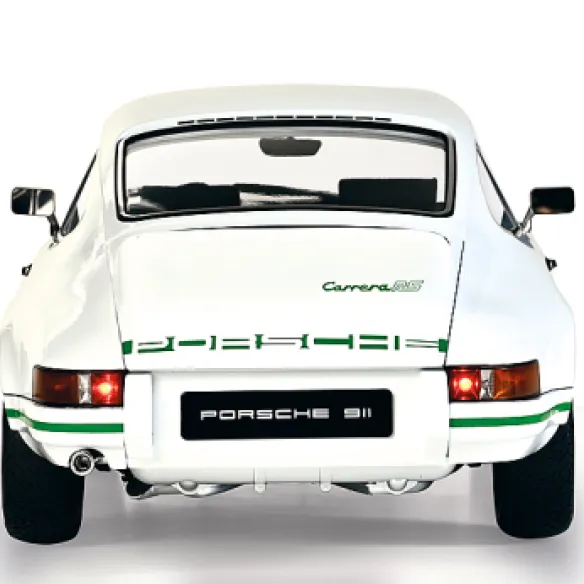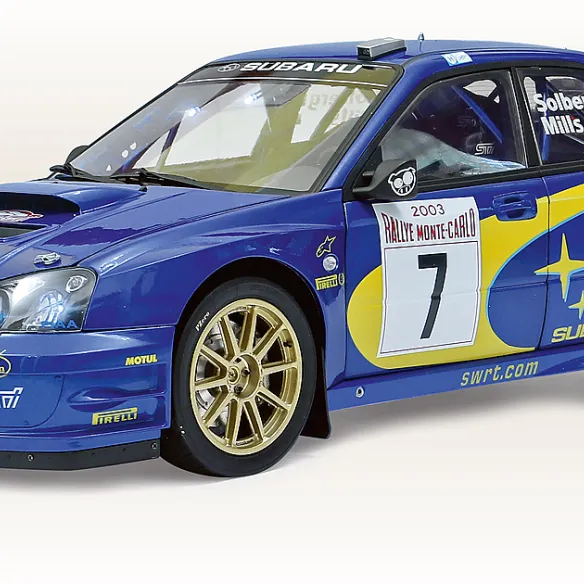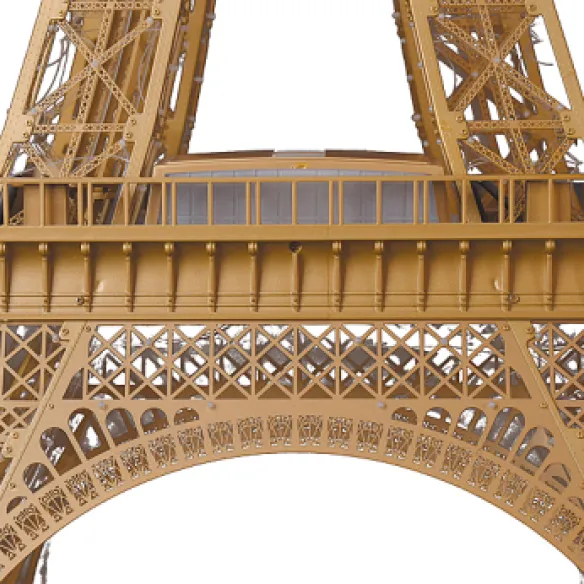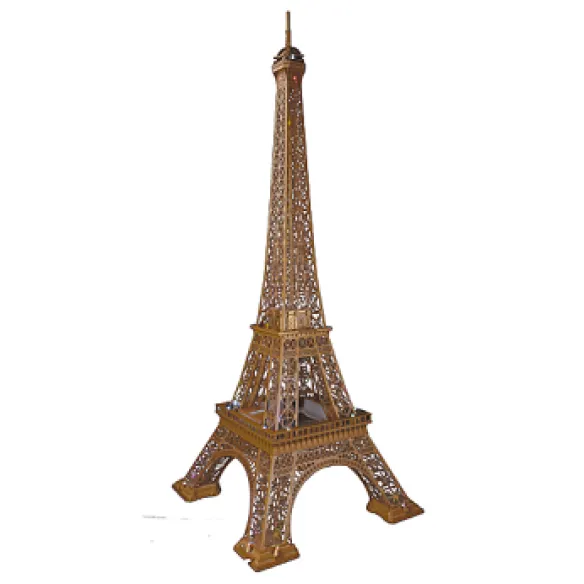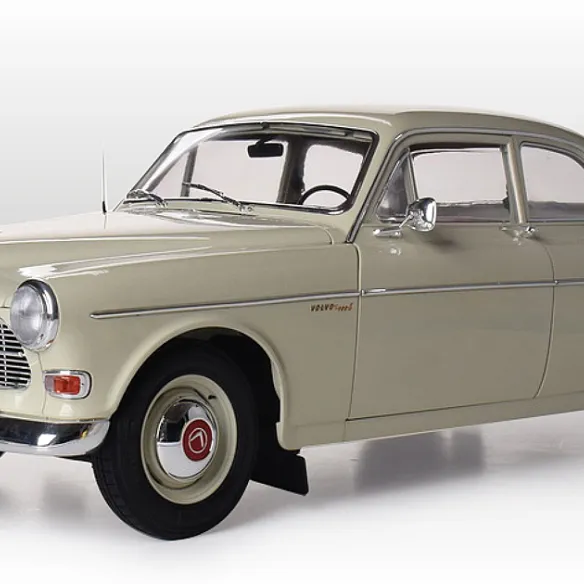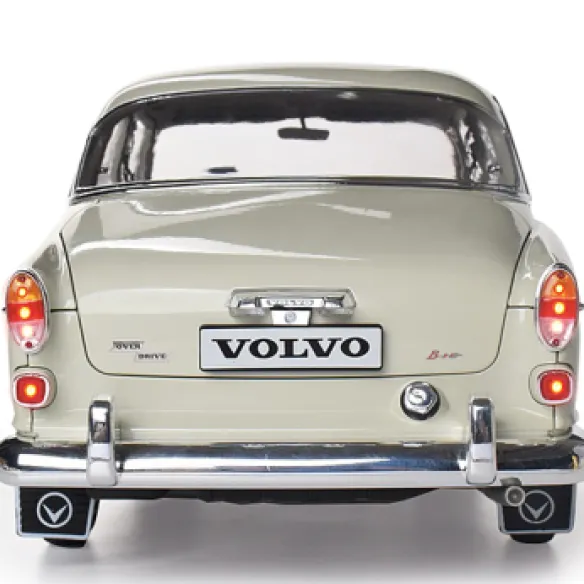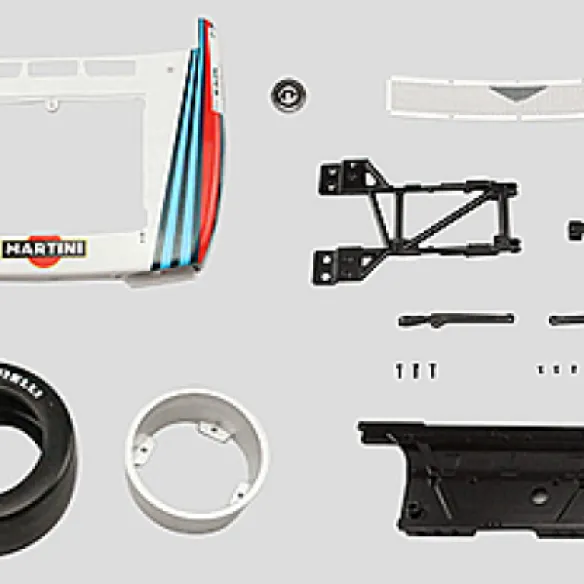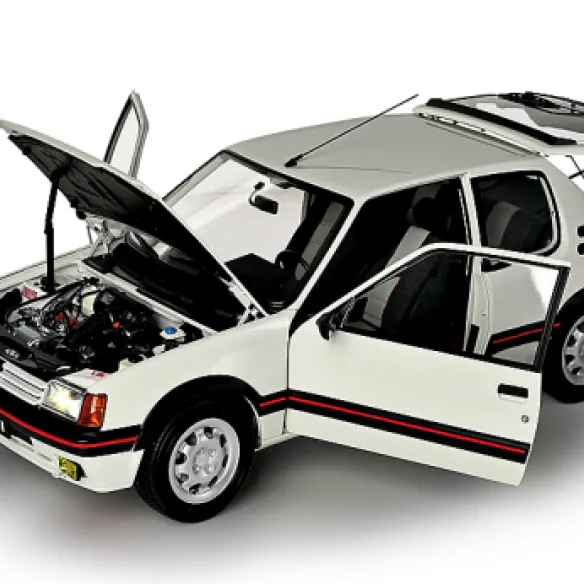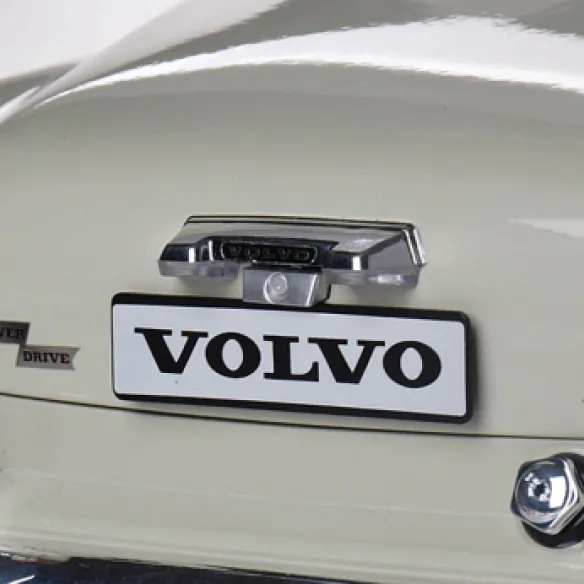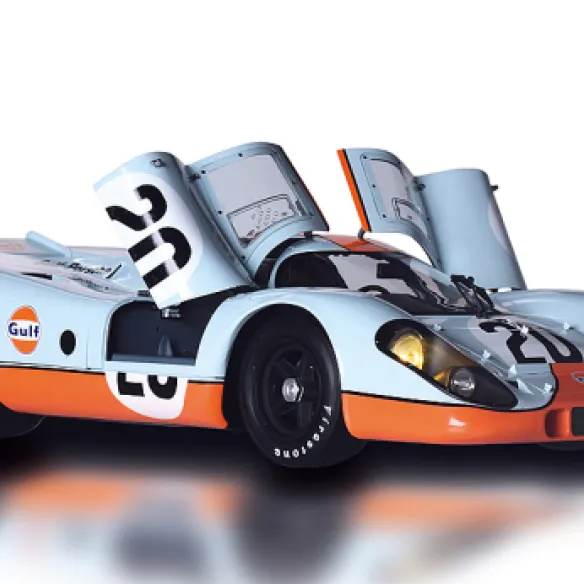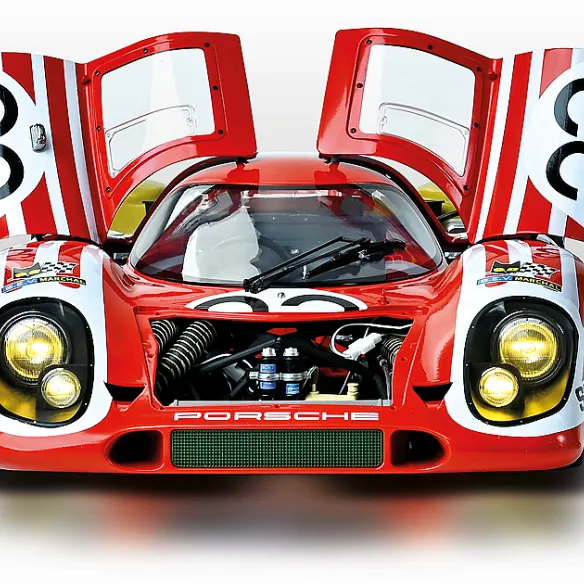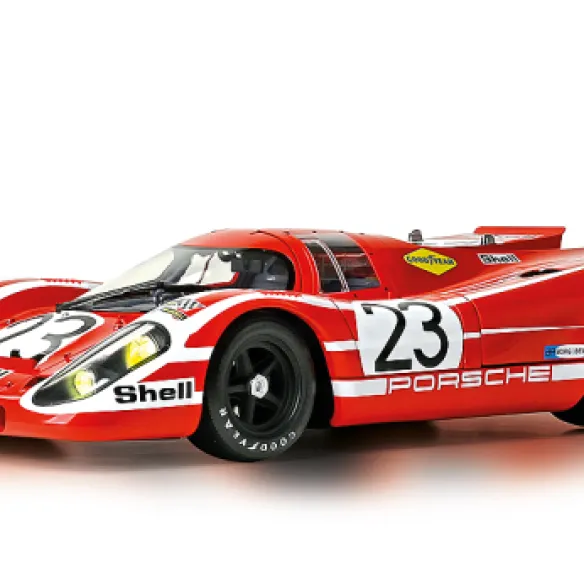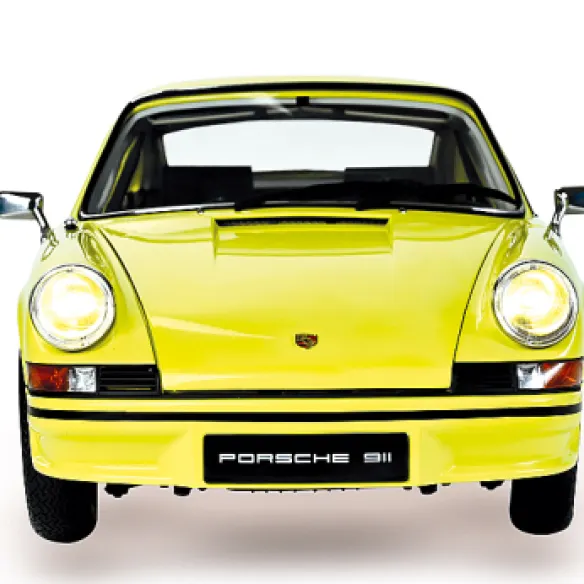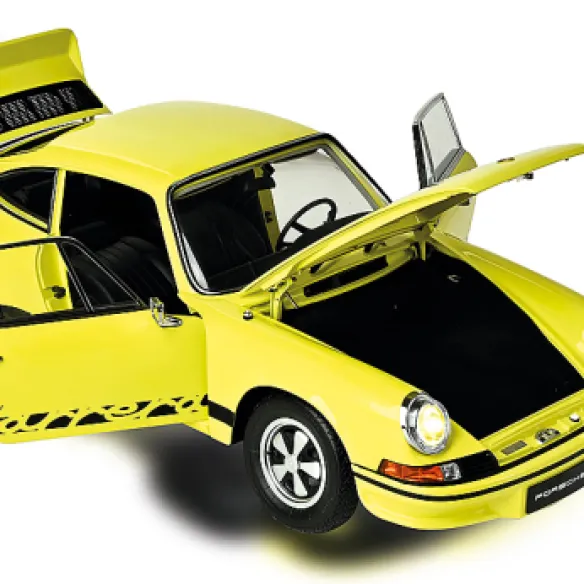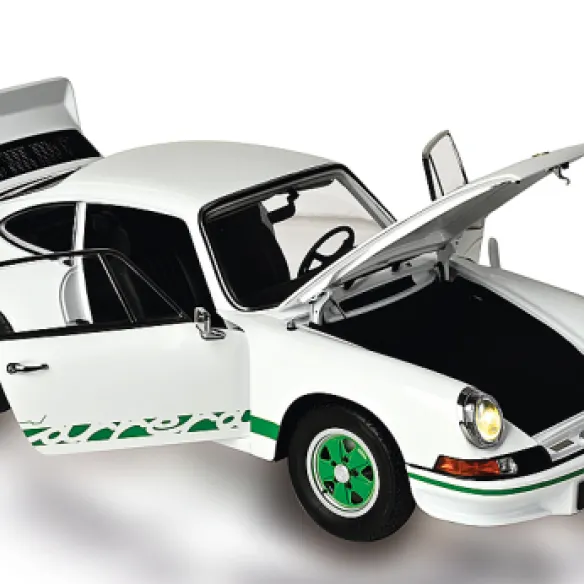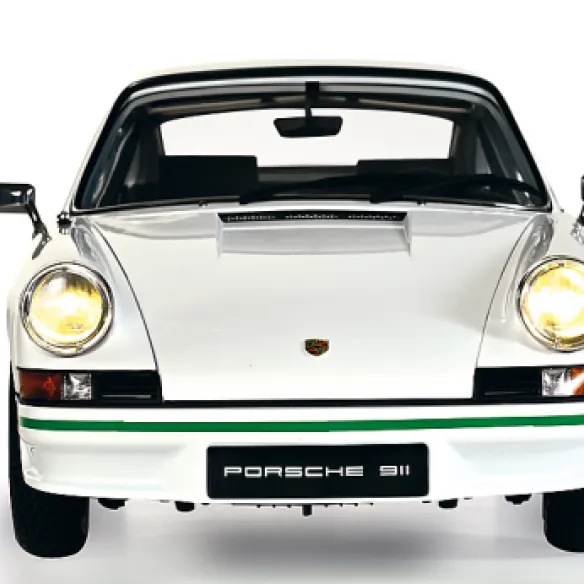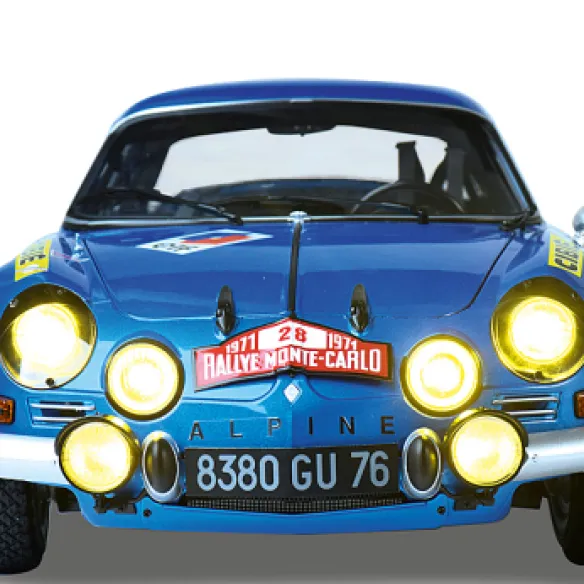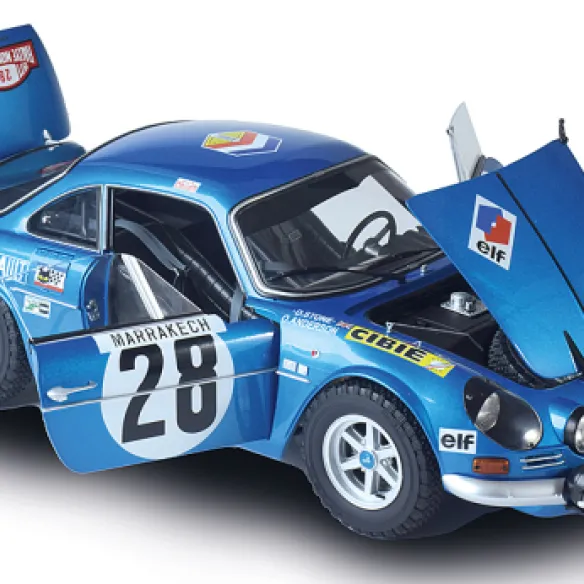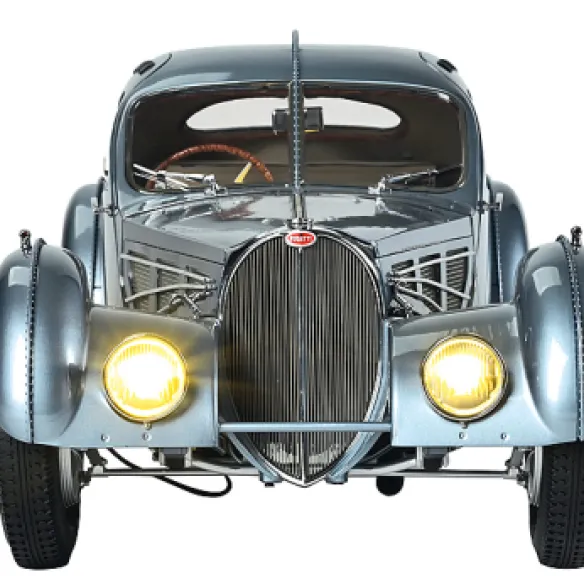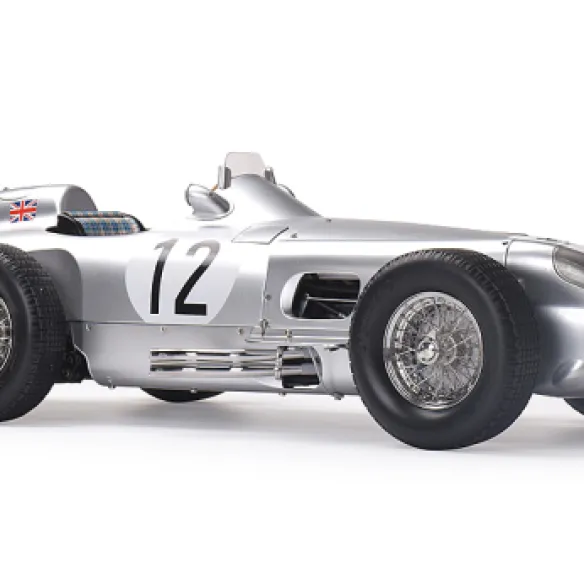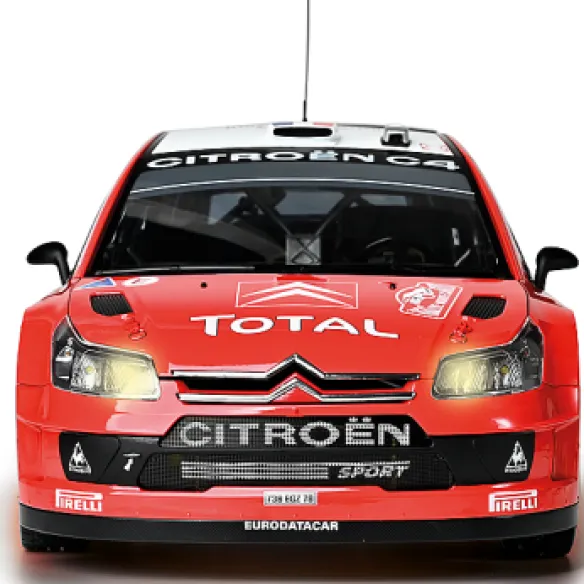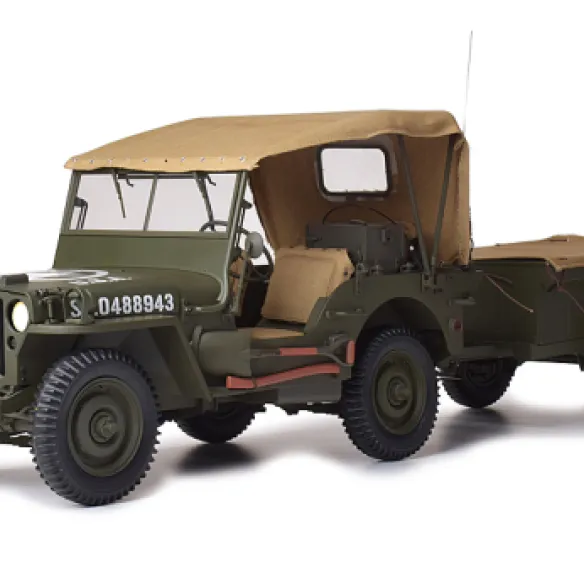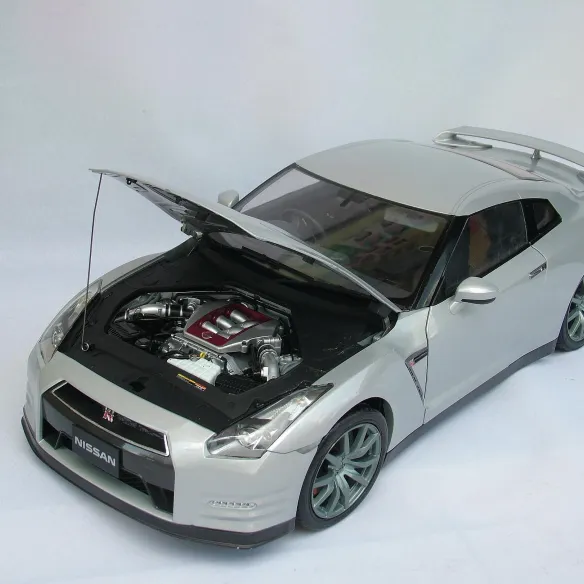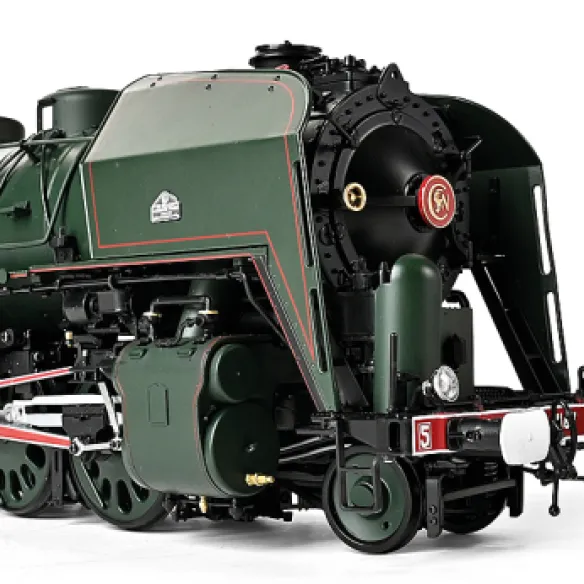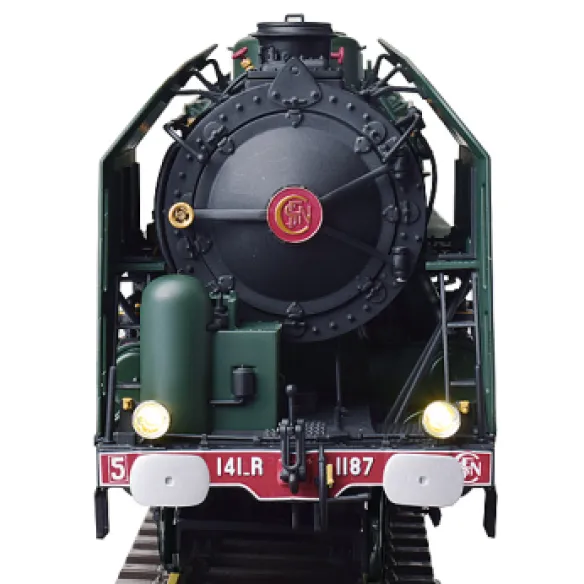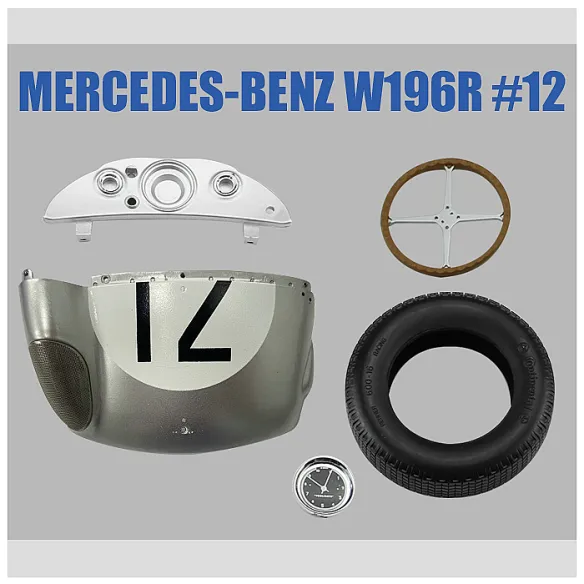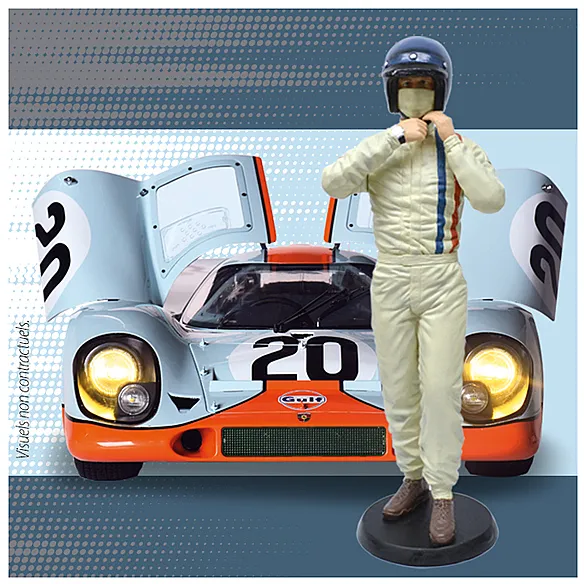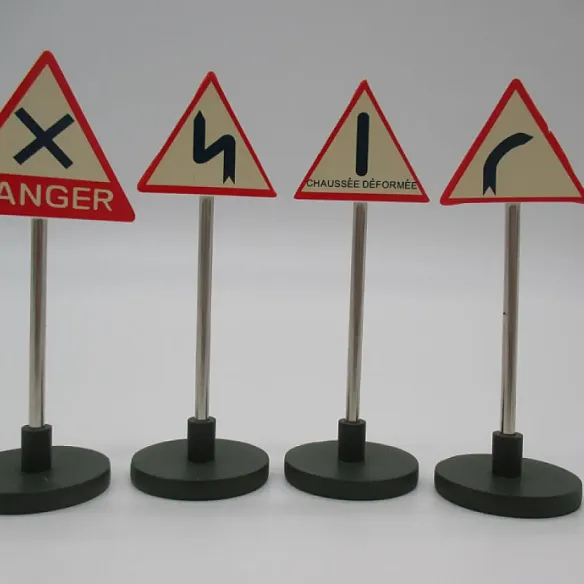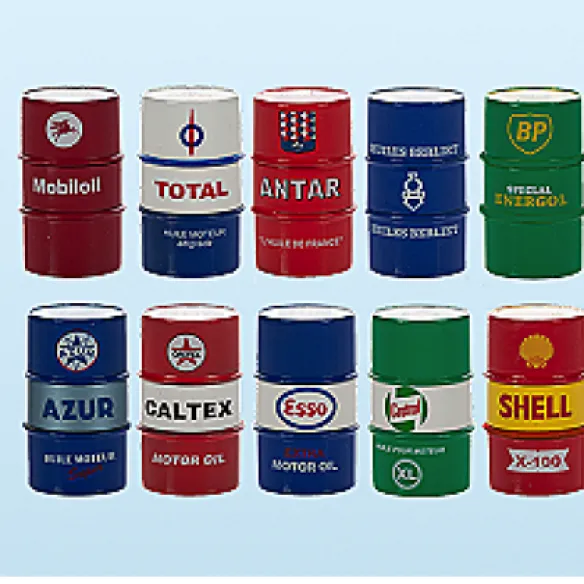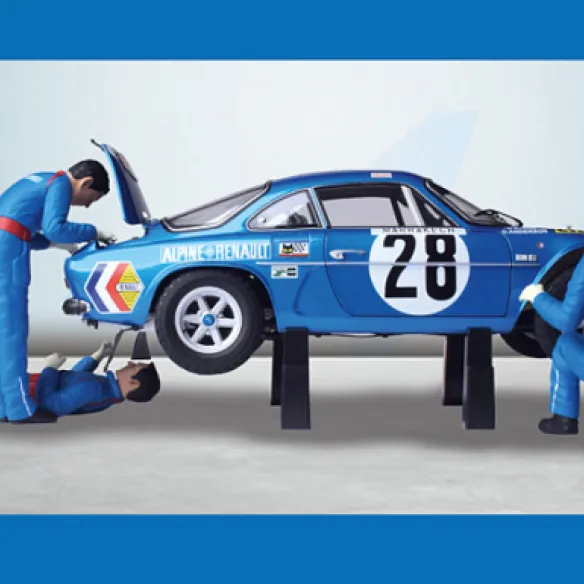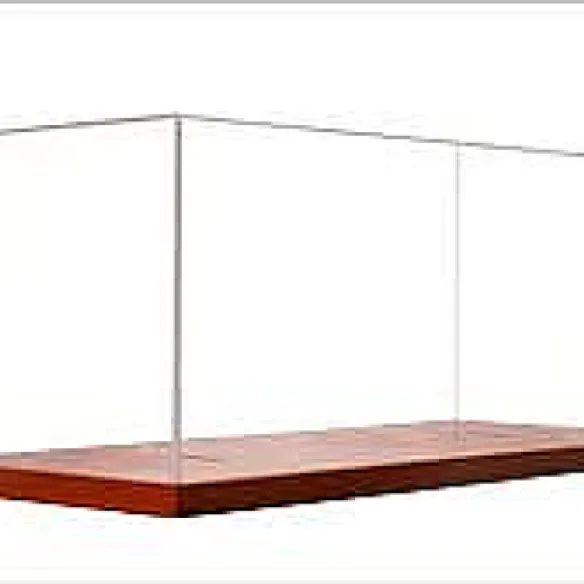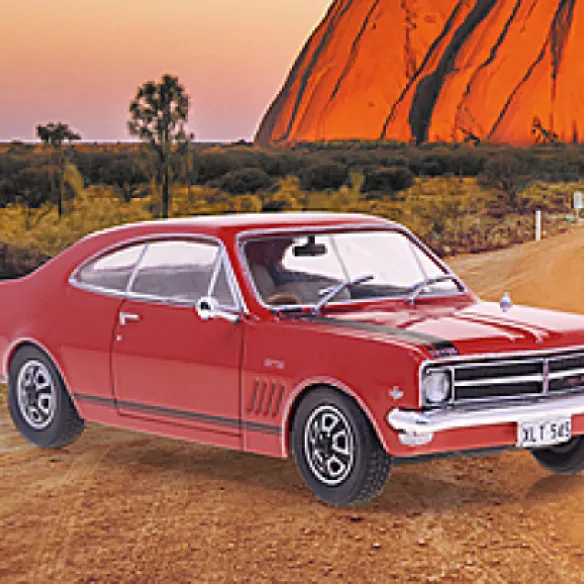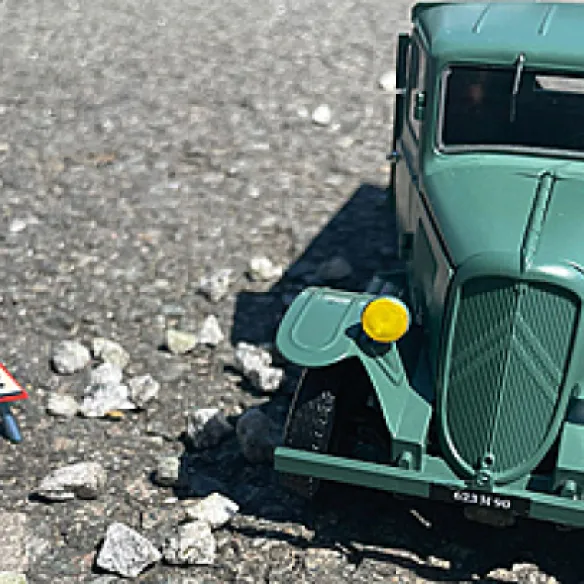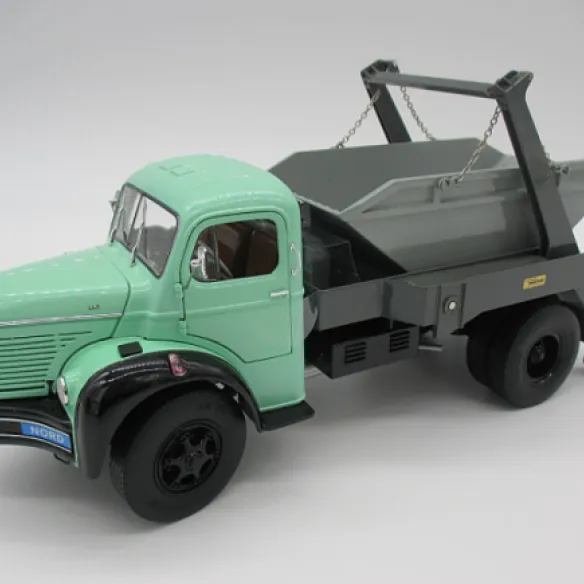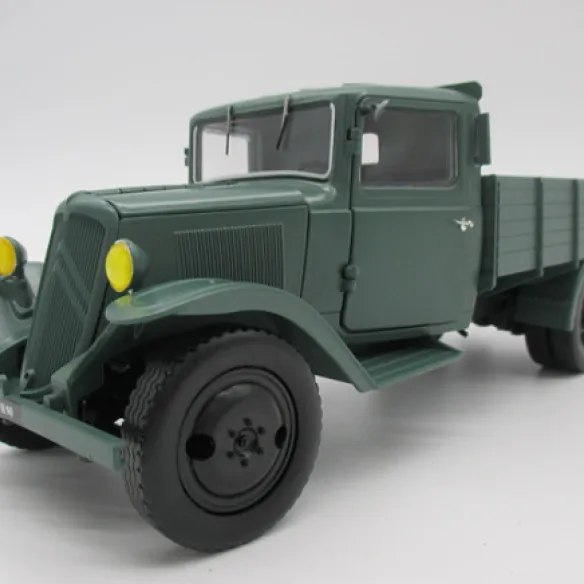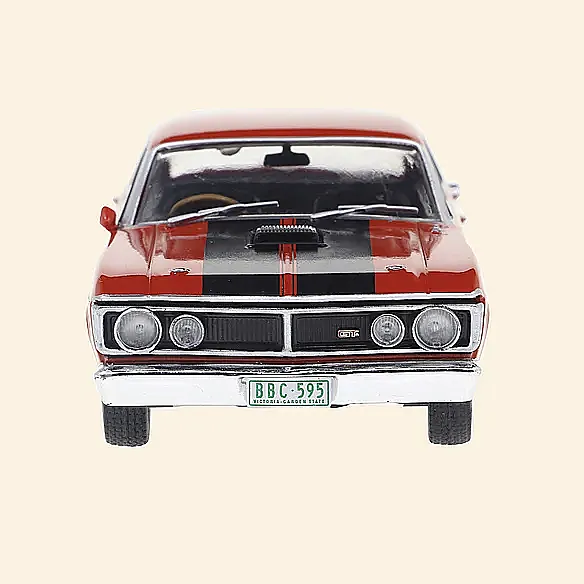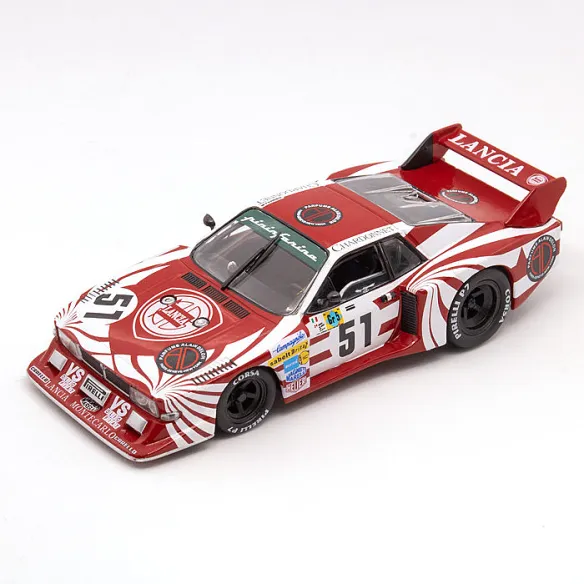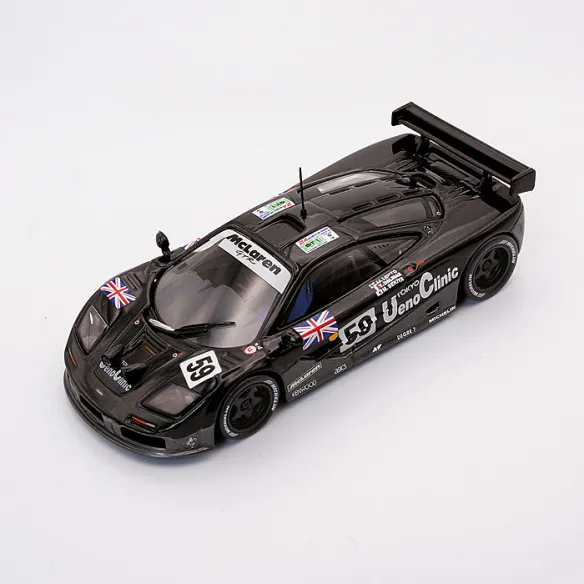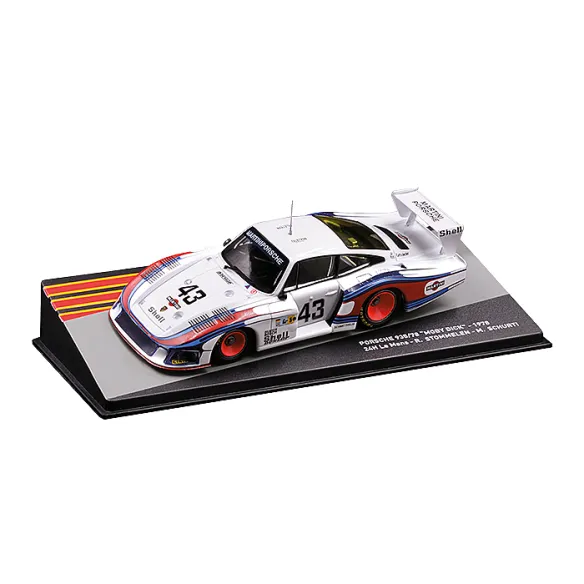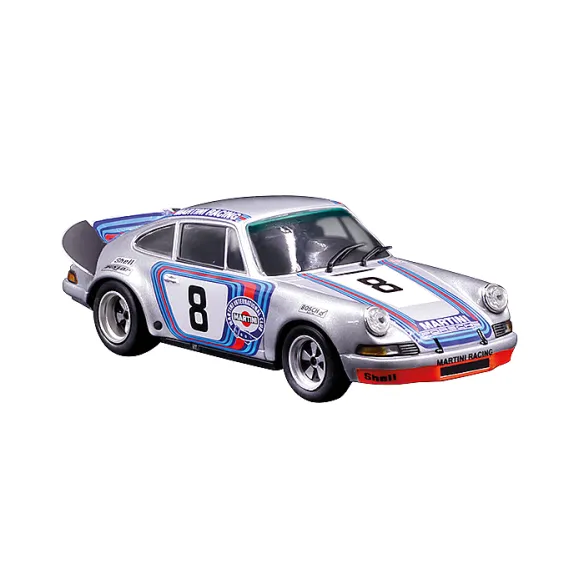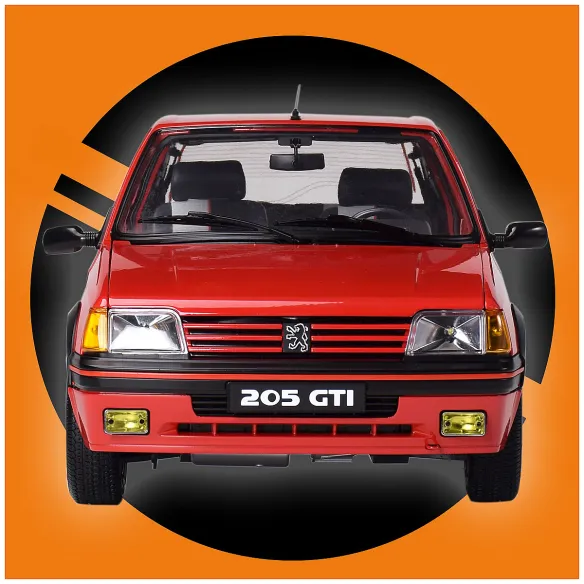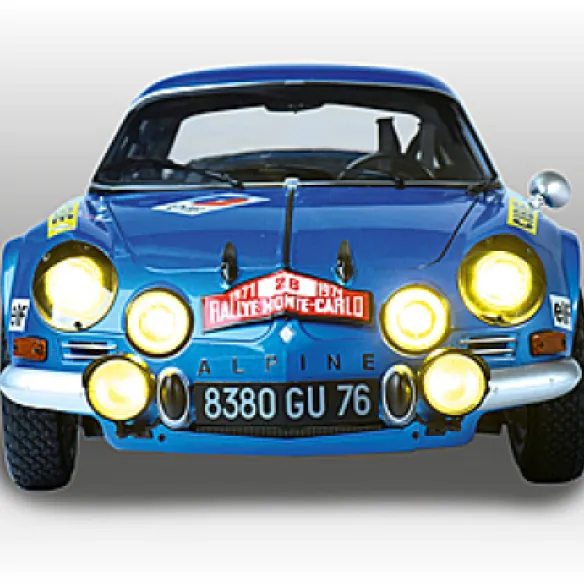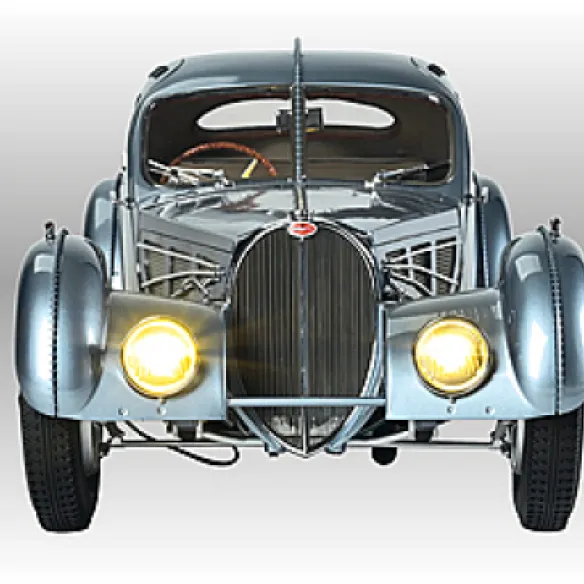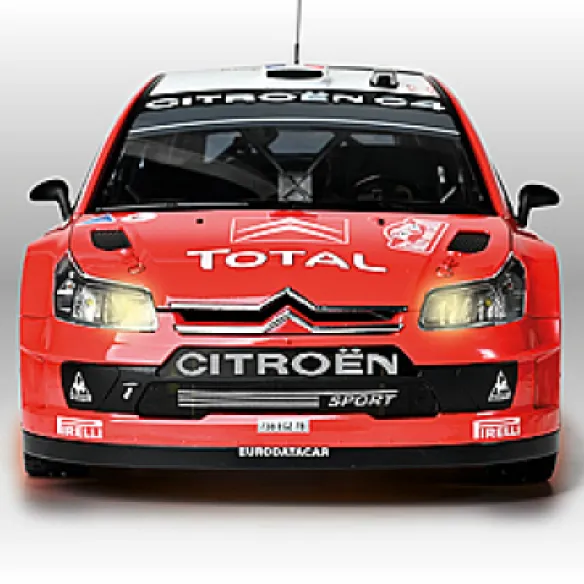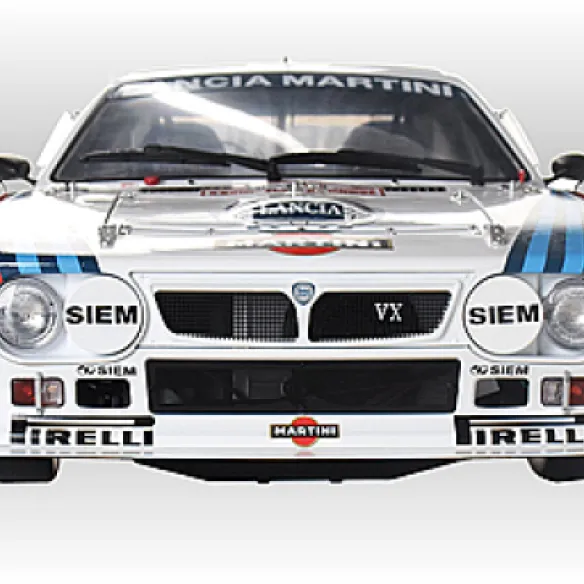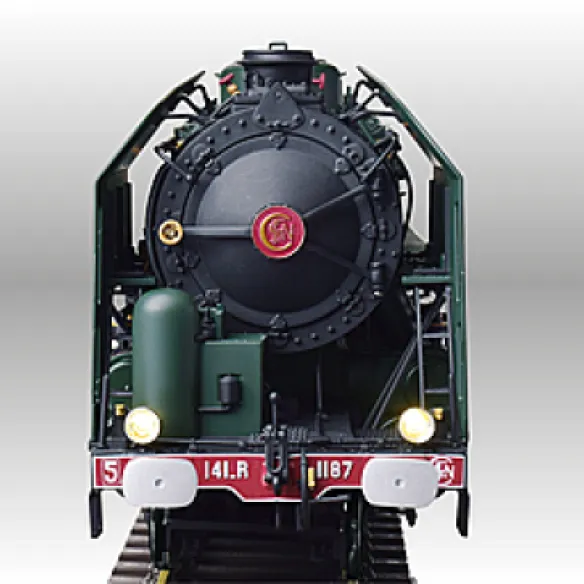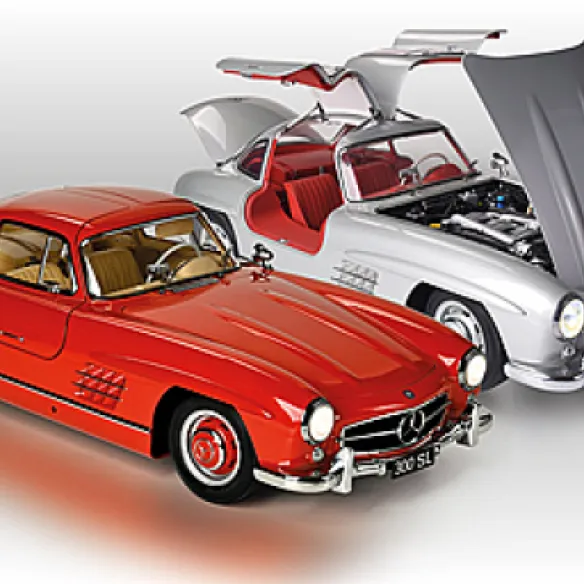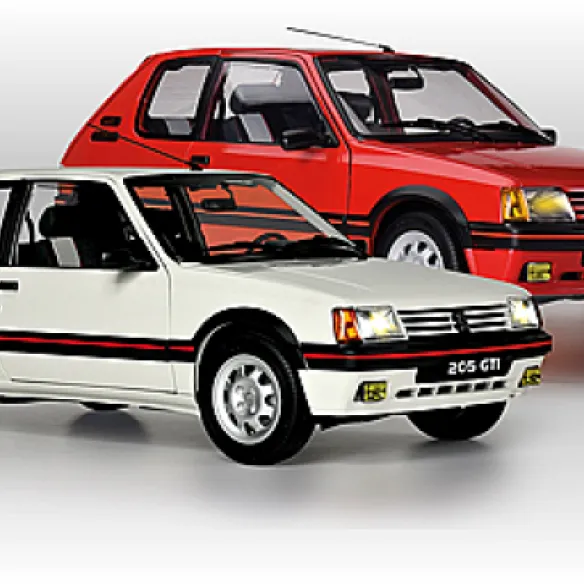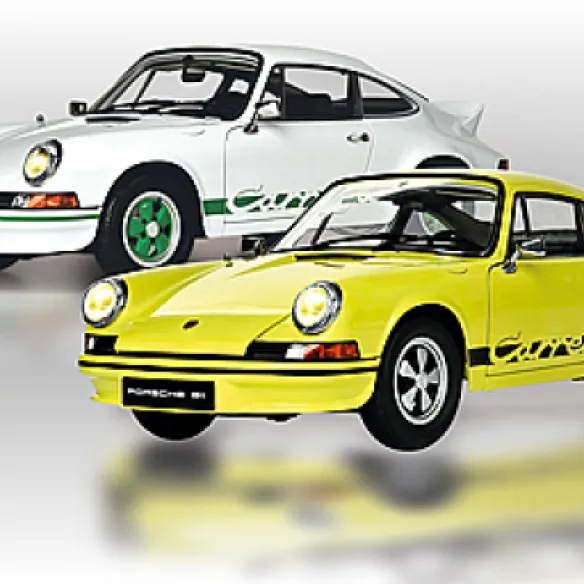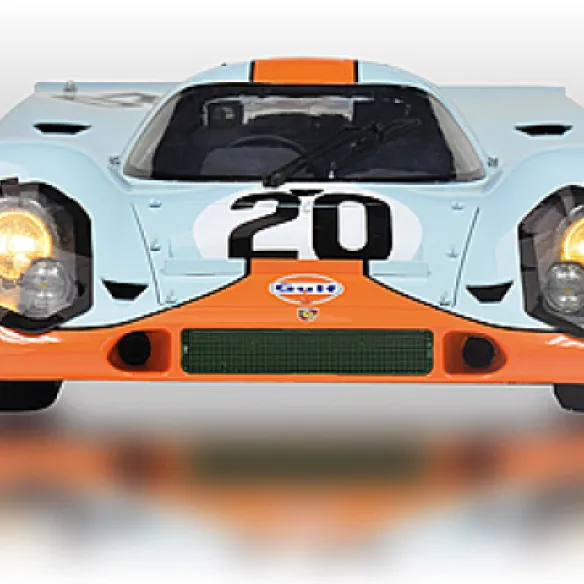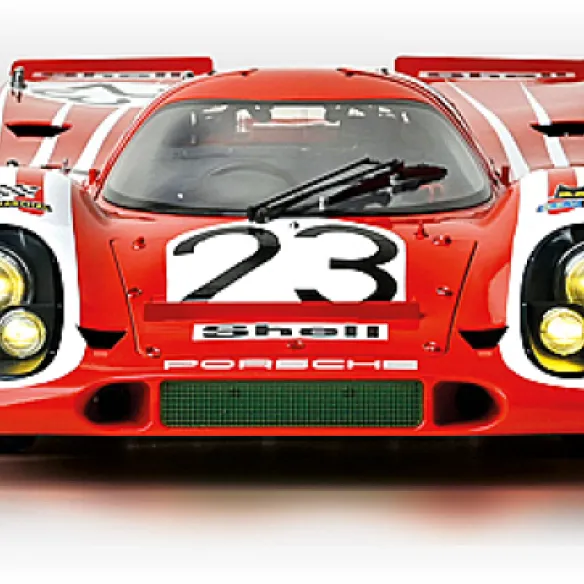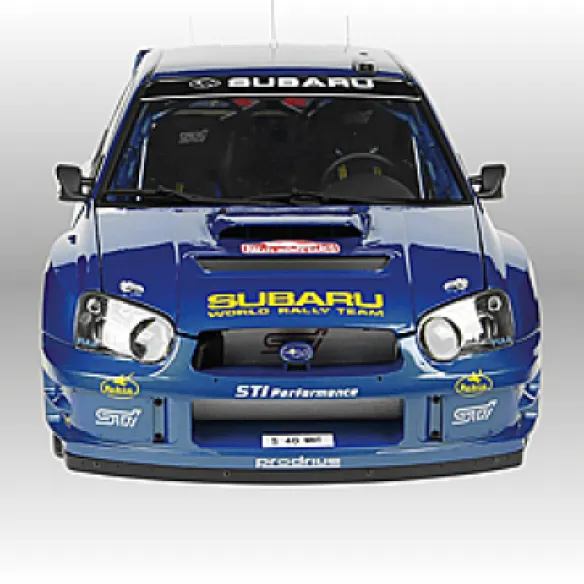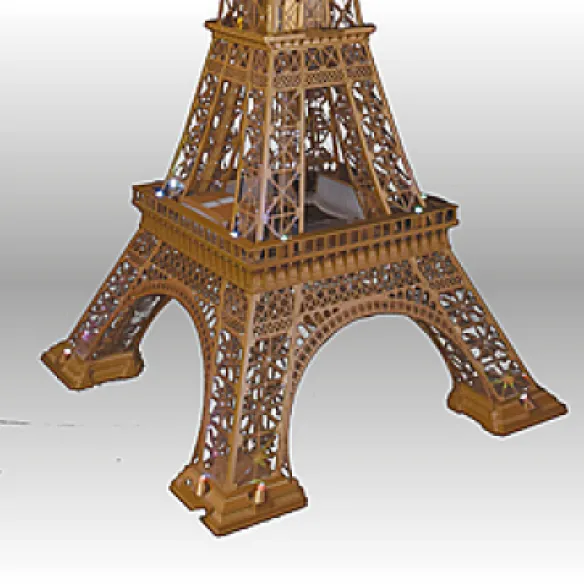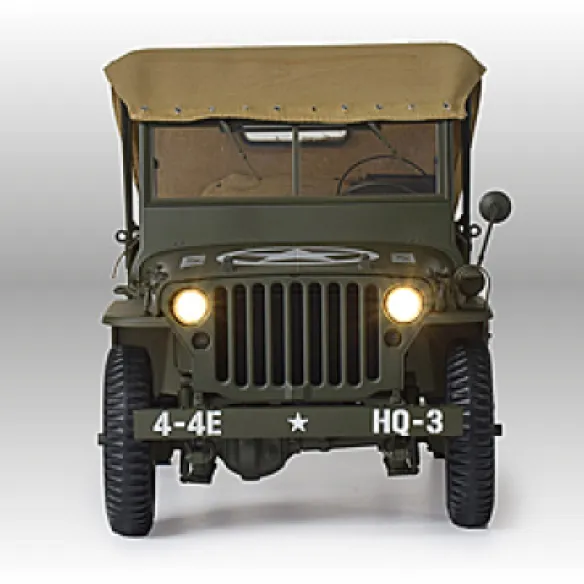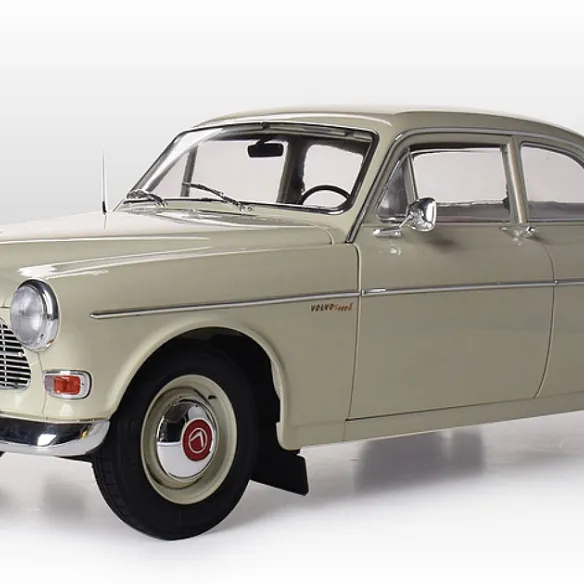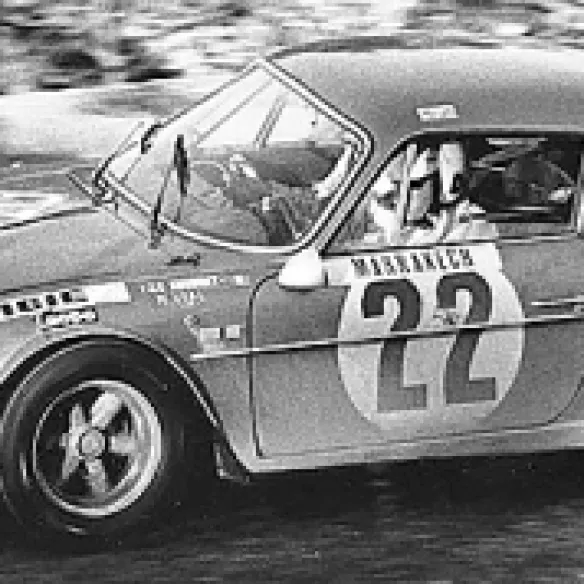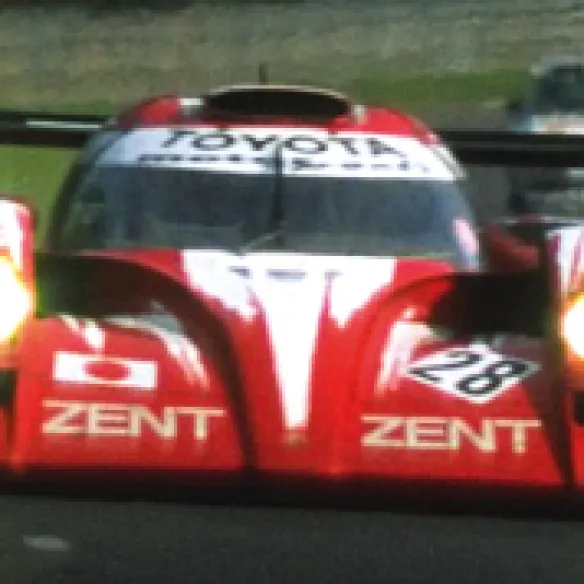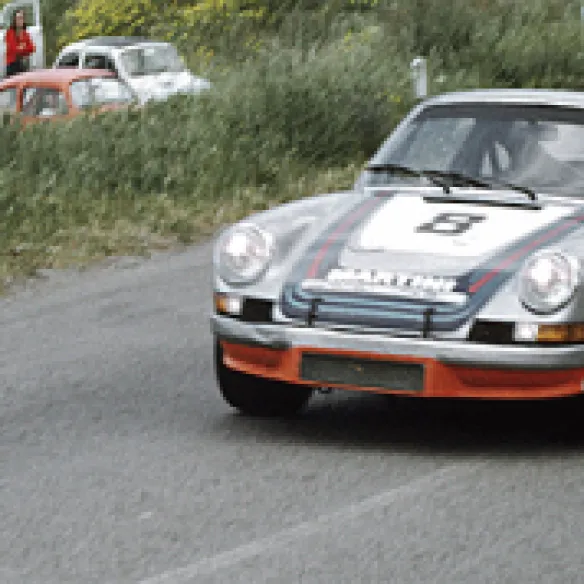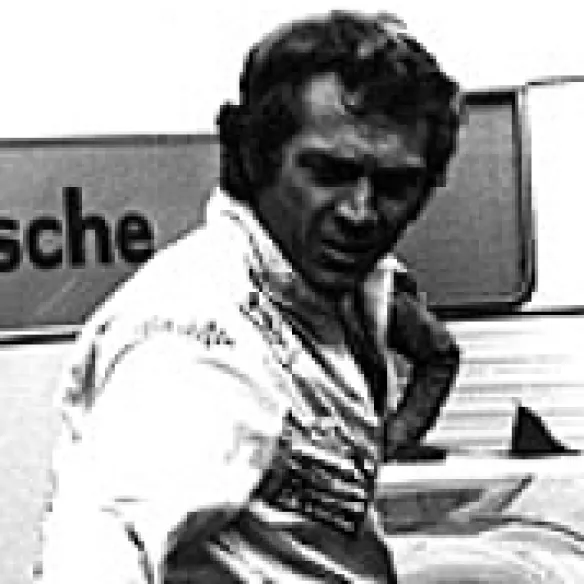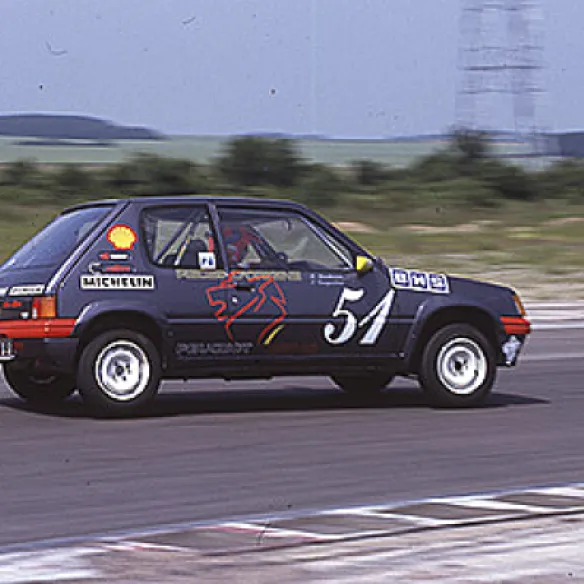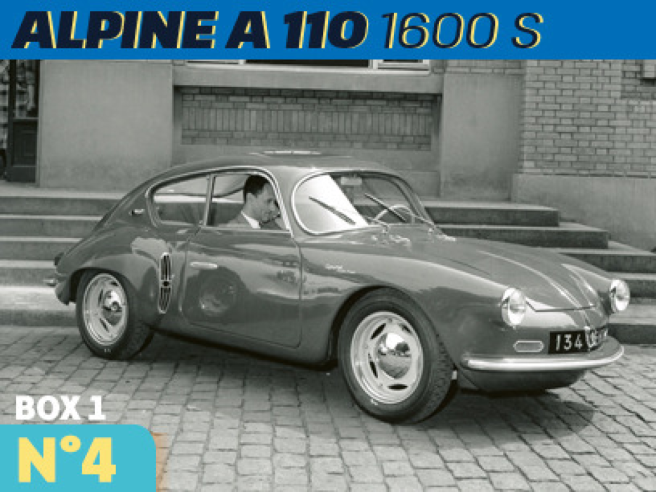
This first model in the history of the new Alpine company went into production in January 1955 before being presented at the Paris Motor Show that following October. The idea of Alpine's creator Jean Rédélé was to build a sports coupé based on the popular Renault 4CV, following the approach of Ferry Porsche with the VW Beetle, and to use as many components as possible from the production run in order to keep manufacturing costs to a minimum.

The Alpine A 106's shape is still far from that of the Berlinette, but they already share an agile and dynamic behaviour © IXO Collections SAS - Tous droits réservés. Crédits photo © Renault D.R. / Archives et Collections
Jean Rédélé was a man of great determination and vision whose passion for racing would inevitably lead him to design his own cars. He was only 32 years old when he created the Alpine brand, having been the youngest Renault dealer in France and one of the best rally drivers of his generation to have driven a specially prepared Renault 4 CV. All of his racing experience is captured in the first Alpine A 106.
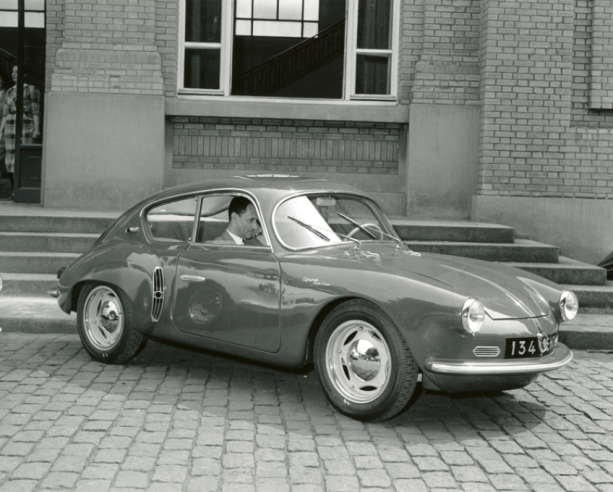
July 1955, Jean Rédélé (at the wheel) officially presents the first Alpine A 106 to Pierre Dreyfus, CEO of Renault, outside the Billancourt offices. © IXO Collections SAS - Tous droits réservés. Crédits photo © Renault D.R. / Archives et Collections
The start of the adventure
As early as 1950, Jean Rédélé was thinking of participating in races with the Renault 4 CV. He knew this popular little car like no other and used it both for his work as a Renault dealer and for the rallies he participated in with his loyal teammate Louis Pons. In 1952, with the help of stylist Giovanni Michelotti, he launched his first coachwork project based on the 4CV out of aluminium. It was the famous "Rédélé Spéciale", built by Allemano in Turin, that was prepared for the race in the Paris workshops of Renault dealer Charles Escoffier, none other than his father-in-law. A second body, derived from the first model presented by Michelotti, was presented at the New York Motor Show in January 1954 under the name "The Marquis". The model attracted the interest of a wealthy American industrialist, Zark Reed, who owned Plasticar Inc. in Doylestown, Pennsylvania, a company specialising in casting laminated polyester bodies. Reed negotiated the licence to manufacture the little car, across the Atlantic, but "The Marquis" proved to have no future, despite the purchase of 150 Renault 4 CV chassis.
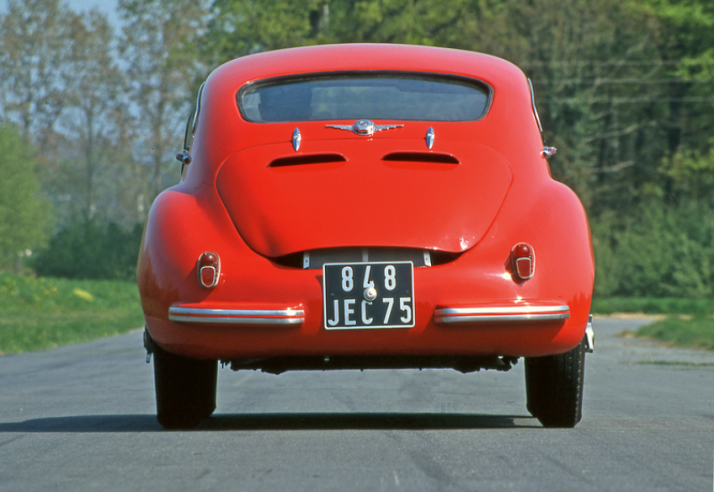
The rear of the A 106 reminds us of the Renault 4CV, from which it takes certain features such as the radiator cap, the bonnet hinges and the parking lights. © IXO Collections SAS - Tous droits réservés. Crédits photo © Renault D.R. / Archives et Collections
Plastic bodywork
However, this failure allowed Jean Rédélé to continue with his projects, as with the money from the US licence, he decided to produce the car himself in France. The solution of a plastic body on a Renault 4CV chassis seemed the most suitable to him. To do so, he called on the Chappe and Gessalin factories in Saint-Maur-des-Fossés, south of Paris, which at the time were virtually the only ones in France capable of processing composite materials. The technique of casting body shells in polyester resin and fibreglass was still new. Such a version was perfectly suited to the small series production envisaged by Rédélé. Moreover, it had the advantage of a lower financial investment for the production of the moulds than for a traditional tool for stamping steel sheets. The steel master used to make the mould was based on Michelotti's design, but although the bodywork was technically a success, the designer's interpretation was not unanimously supported by everyone. Nevertheless, the three blue, white and red painted models of the small " coupé " presented in the courtyard of the Régie in Boulogne-Billancourt in July 1955 to Renault's CEO Pierre Dreyfus aroused the sympathy of the latter and of the press present.
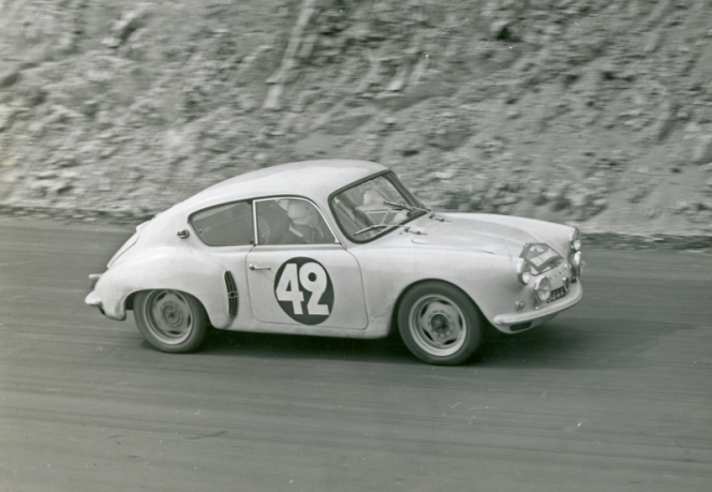
The A 106 made it possible to race a real racing car at a lower cost. Pictured here are Féret and Malraux at the 1959 Lyon Charbonnières Rally (1st in the under 1,000 cm3 category). © IXO Collections SAS - Tous droits réservés. Crédits photo © Renault D.R.
The 4CV engine
The car was named Alpine A 106 in memory of the victories of Rédélé and Pons at the Critérium des Alpes, while 106 refers to the first three digits of the name of the type 1062 and 1063 engines of the Renault 4 CV. Thereafter, the naming of the Alpine followed a different logic. The first edition of the Alpine A 106 was available with three engines, all based on the 747cc cast iron four-cylinder engine with aluminium cylinder heads used in the 4CV saloon. The "Normal" version, fitted with a Solex 22 carburettor, offered 21 bhp at 4,100 rpm and 4.6 mkg torque at 2,100 rpm with a top speed of 115 km/h. The sportier "Mille Miles" version developed up to 48 bhp at 6,200 rpm thanks to its Solex 35 PAAI or Weber 36 DCLD-3 twin-barrel carburettor and allowed a speed of 153 km/h. In between the two was the S ("Special") version with 32 bhp at 4,800 rpm, fitted with a Solex 32 carburettor, and a top speed of 125 km/h. The basic transmission was the 3-speed gearbox of the 4CV, but as an option it was possible to fit the famous Claude type 5-speed gearbox, for which Jean Rédélé and Louis Pons bought the patent in 1952 and which is manufactured in the Pons workshops on Rue de Javel in Paris.
The founder
Jean Rédélé was born on 17 May 1922 in Dieppe. His father, Émile Rédélé, the owner of a Renault dealer in Dieppe, instilled an interest in mechanics in Jean at an early age. After graduating from the Hautes Études Commerciales in 1946, he decided to rebuild his father's garage, which had been destroyed during the war. At the same time, he created an infrastructure to restore and resell the equipment left behind in France by the American army during the World War II conflict. In the early 1950s, he and his friend Louis Pons took part in the major international classic rallies, driving a modified Renault 4CV. From 1952 to 1954, they won their class together in the Mille Miglia, as well as the Rallye Liège-Rome-Liège and the Coupe des Alpes in 1954. In 1952 he designed a coupé on a chassis of the Renault 4CV, which was the starting point for the Alpine brand he founded on 6 July 1955 in his hometown.
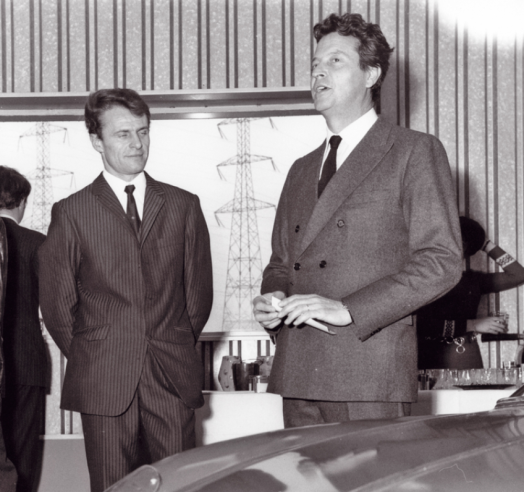
Did Jean Rédélé, on the right, have any idea of the immense success that awaited the Alpine brand when he launched the A 106 model in 1955? © IXO Collections SAS - Tous droits réservés. Crédits photo © Renault D.R. / Archives et Collections
The Allemano coupé
Even before producing the first Alpine A 106, Jean Rédélé already envisaged a small Renault sports car based on the 4CV in which he had often competed. In 1952, he commissioned the young Italian stylist Giovanni Michelotti to undertake a study. Michelotti asked the Turin-based coachbuilder Allemano to produce two units of a coupé called the "Rédélé Spéciale" with a lightweight aluminium body. This model is the direct predecessor of the future Alpine dynasty, especially when one looks at the side trim in front of the rear wheels that will soon characterize the line of the Berlinettes. The high cost of manufacturing such a model in aluminium encouraged Jean Rédélé to opt for a lightweight plastic body for the future Alpine A 106.
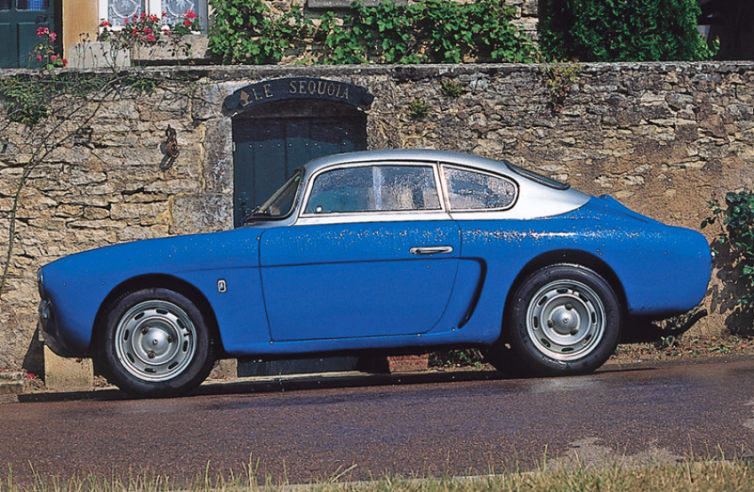
The lines of the 1952 Allemano coupé already foreshadowed those of the first Alpine A 106s that would soon be produced. © IXO Collections SAS - Tous droits réservés. Crédits photo © Renault D.R. / Archives et Collections
First Motorshow
Nine months after its official launch, the Alpine A 106 was exhibited at the 42nd Paris Motor Show held in October 1955 under the vaults of the Grand Palais. This was a great debut for the Société des Automobiles Alpines, recently created by Jean Rédélé. The premises of the young firm were located within the Établissements Charles Escoffier, 11 rue Forest in the 18th arrondissement of Paris, one of the largest Renault dealers in France. About thirty units of the A 106 had already been sold by the time the Paris Motor Show opened, where only versions 1062 with a "Normal" engine and 1062 with a "Special" engine were available, with the Mille Miles only being produced on order. The list price was 824,000 and 889,000 Francs respectively, more than double the price of a basic Renault 4 CV (395,000 Francs). The body was still only available in blue, white or red.
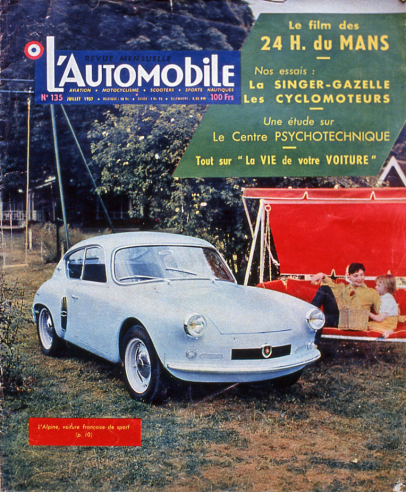
In the months following its presentation, the A 106 made the front pages of the trade press, which praised it as one of the rare French sports cars produced in series at the time.
© IXO Collections SAS - Tous droits réservés. Crédits photo © Renault D.R. / Archives et Collections
A captivating event
Since its launch in 1955, the Alpine A 106 has contributed to a number of the most memorable moments in the history of international motor sport. At the famous Italian Mille Milles event in 1955, Jean-Claude Galtier and Maurice Michy won the Touring category up to 750 cm3 with the Allemano Coupé, followed by Jean Rédélé and Louis Pons in an A 106. The latter had previously distinguished themselves in this event from 1952 to 1954 with their 4 CV 1063. The success of the new A 106 caused a stir in France and Jean Rédélé decided to exploit it commercially by adding the acronym "Mille Miles" to the name of the A 106 intended for competition use. As is often the case, confusion arose between the English and Italian expressions of the word miles resulting in the "L" not being doubled. This spelling error was deliberately maintained by Renault until the 1990 Alpine V6 Turbo "Mille Miles".

The Alpine A 106 "Mille Miles" was a competition version whose engine had been specially prepared by Mignotet. © IXO Collections SAS - Tous droits réservés. Crédits photo © Renault D.R. / Archives et Collections
Technical sheet
Recent articles
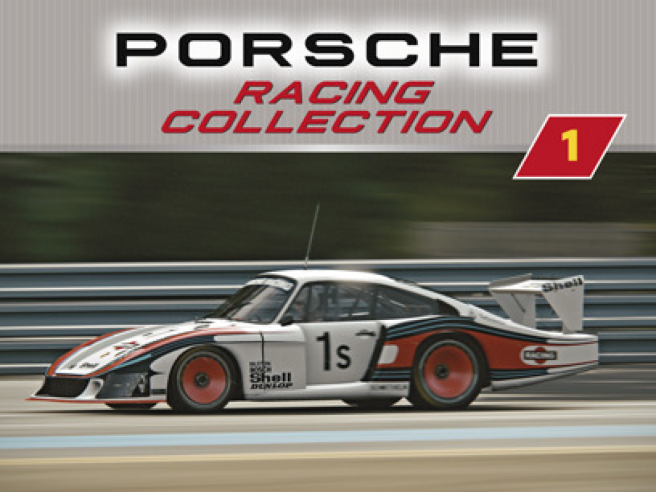
06/05/2024
PORSCHE 935/78 « Moby Dick »
Trois ans d’évolution pour arriver à 850 ch de puissance
Read more
05/05/2024
PORSCHE 911 CARRERA 2.8 RSR
A SINGLE MOTTO : REDUCE WEIGHT AND GET MORE HORSEPOWER FROM THE ENGINE
Read more
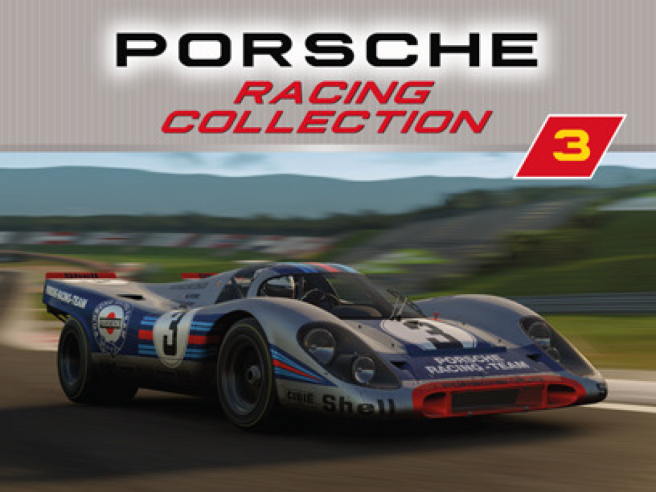
01/05/2024
PORSCHE 917 kH
The most refined engine never created by porsche
Read more


 English
English français
français Deutsch
Deutsch español
español italiano
italiano português
português